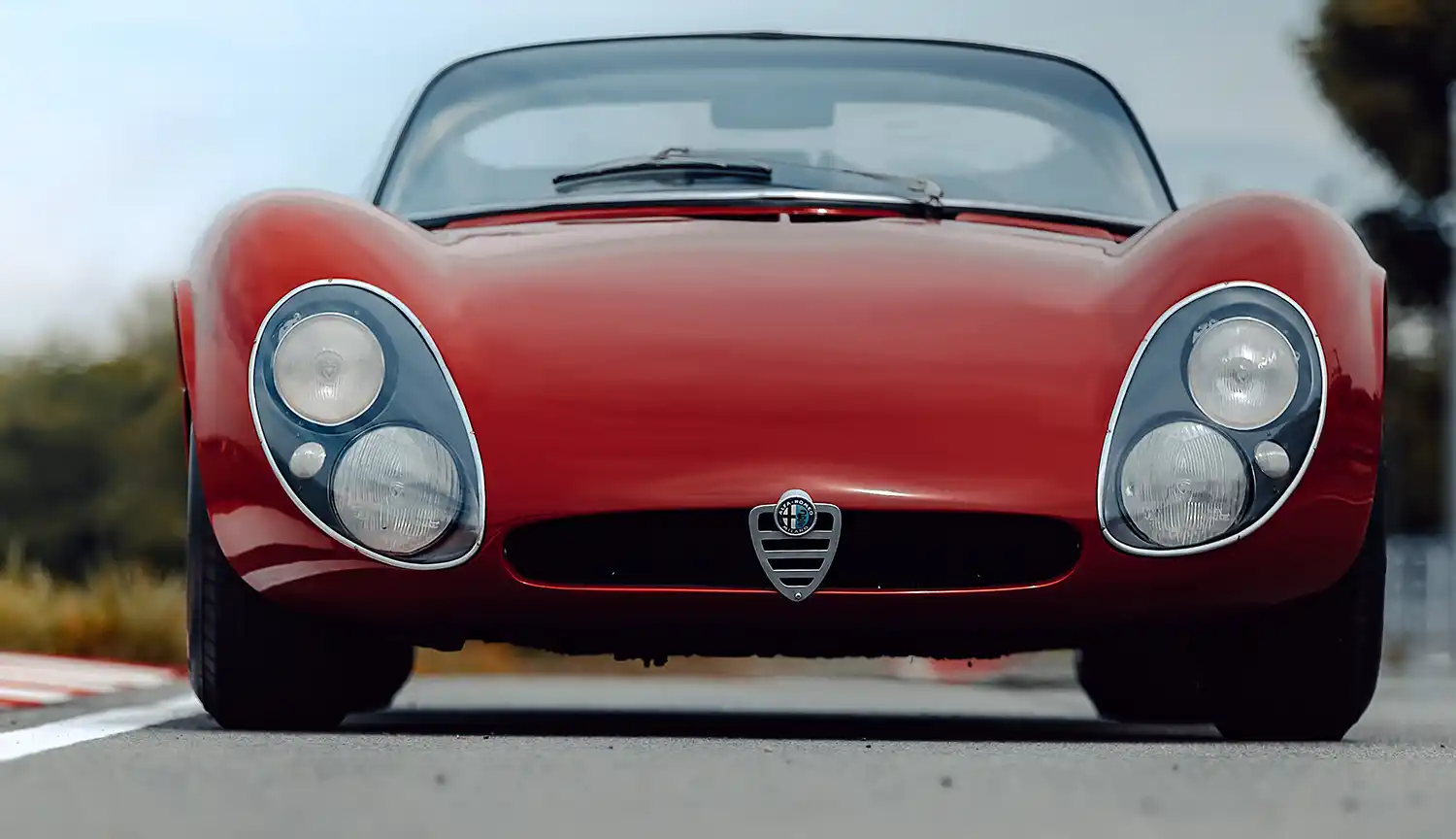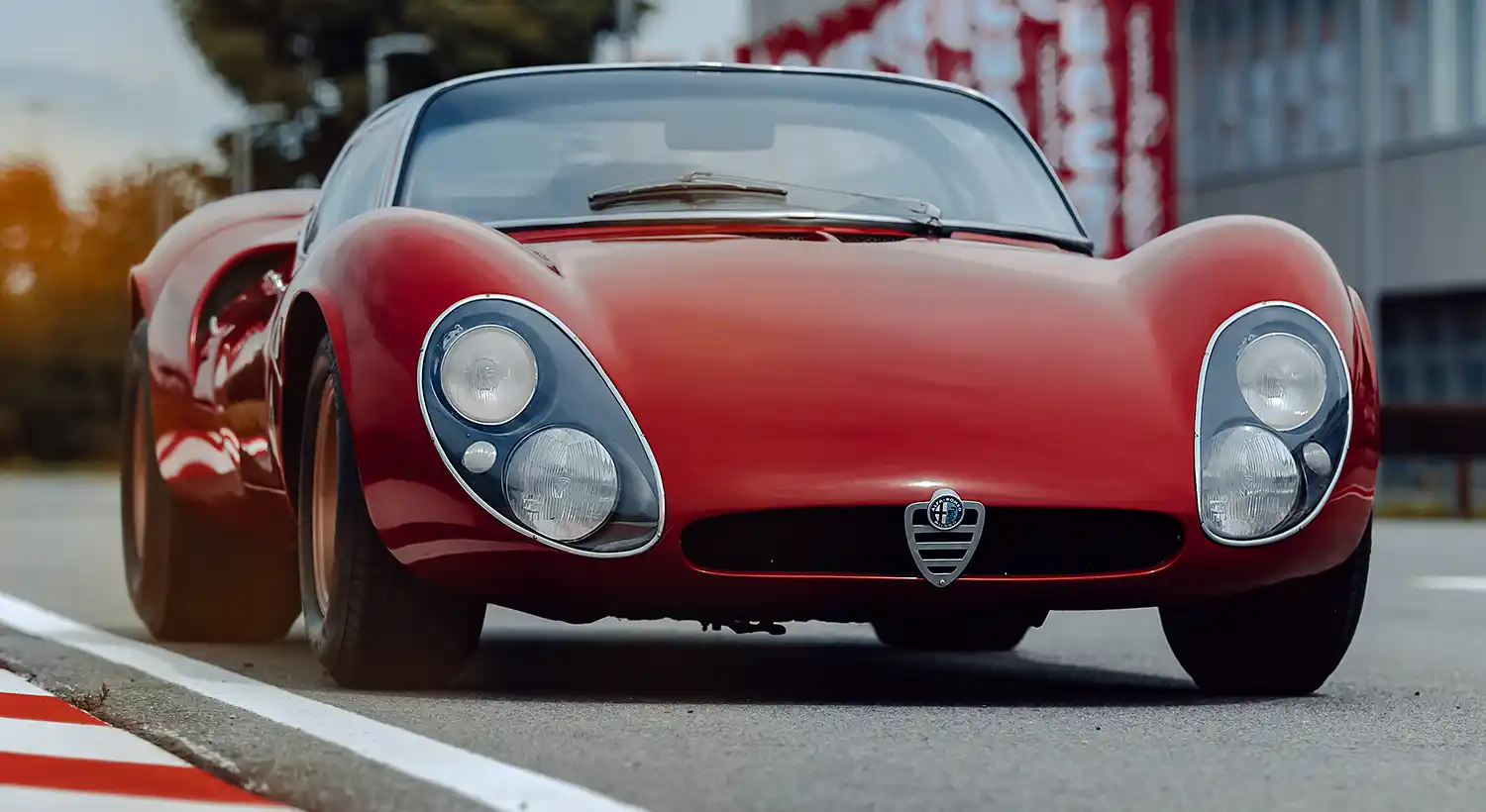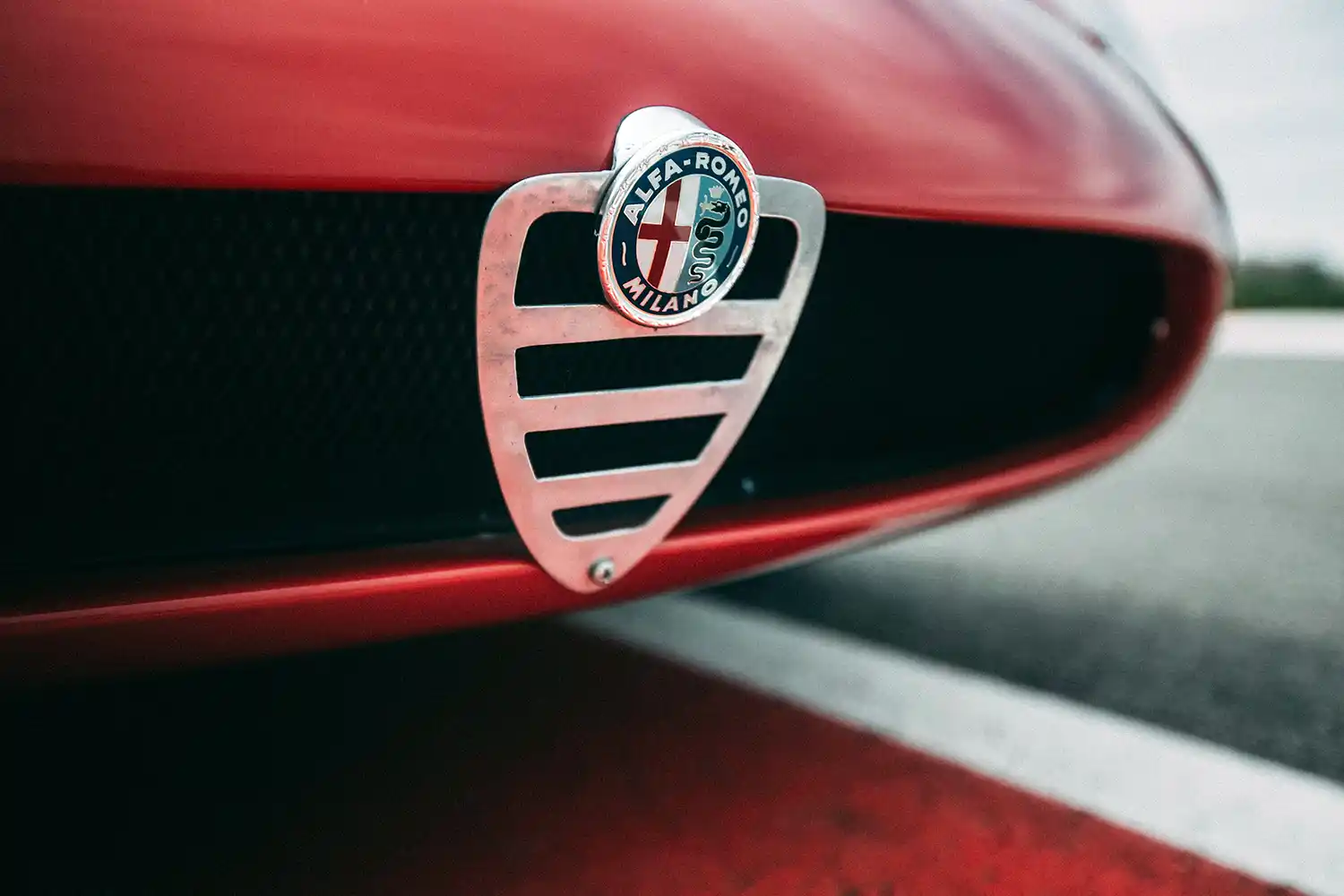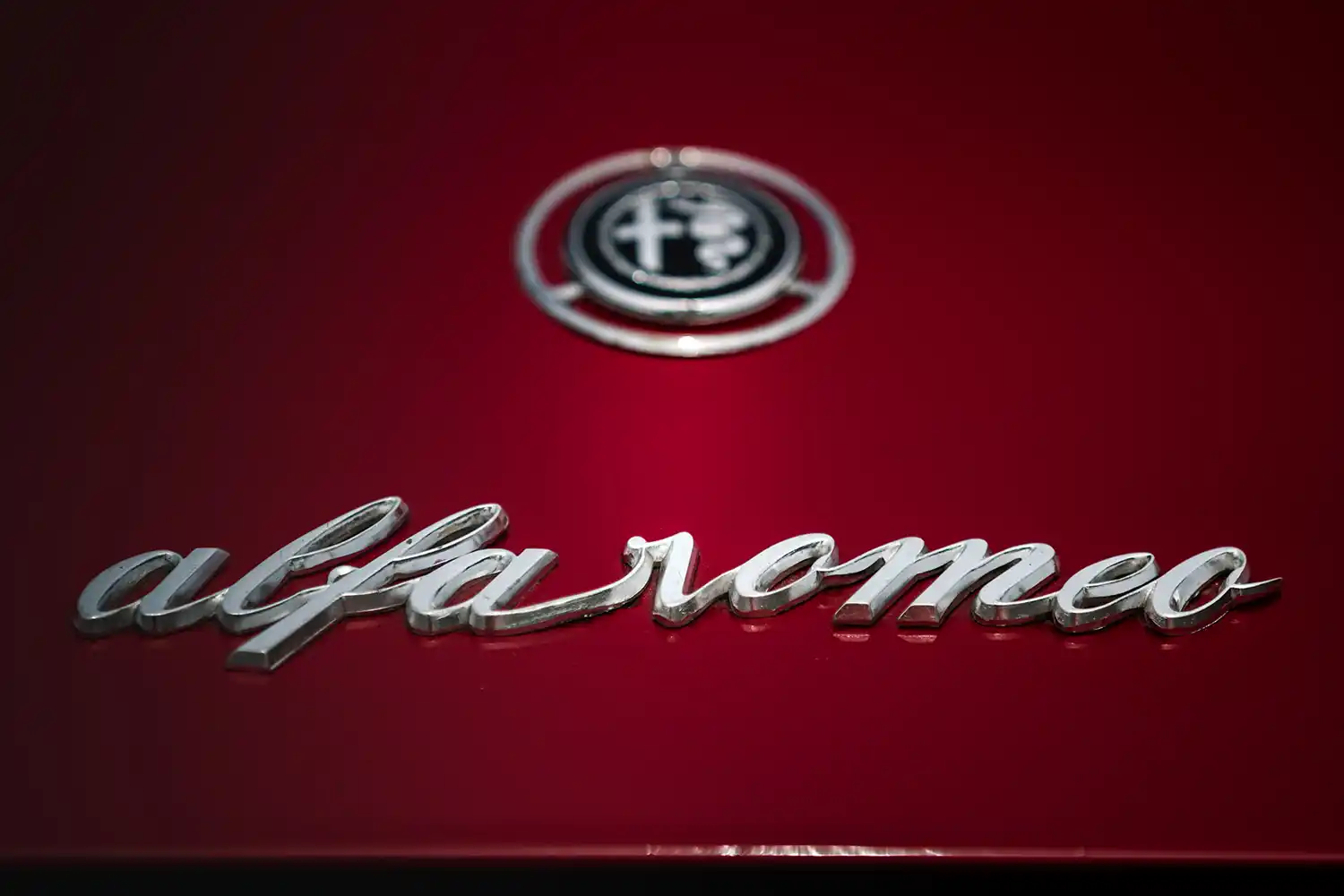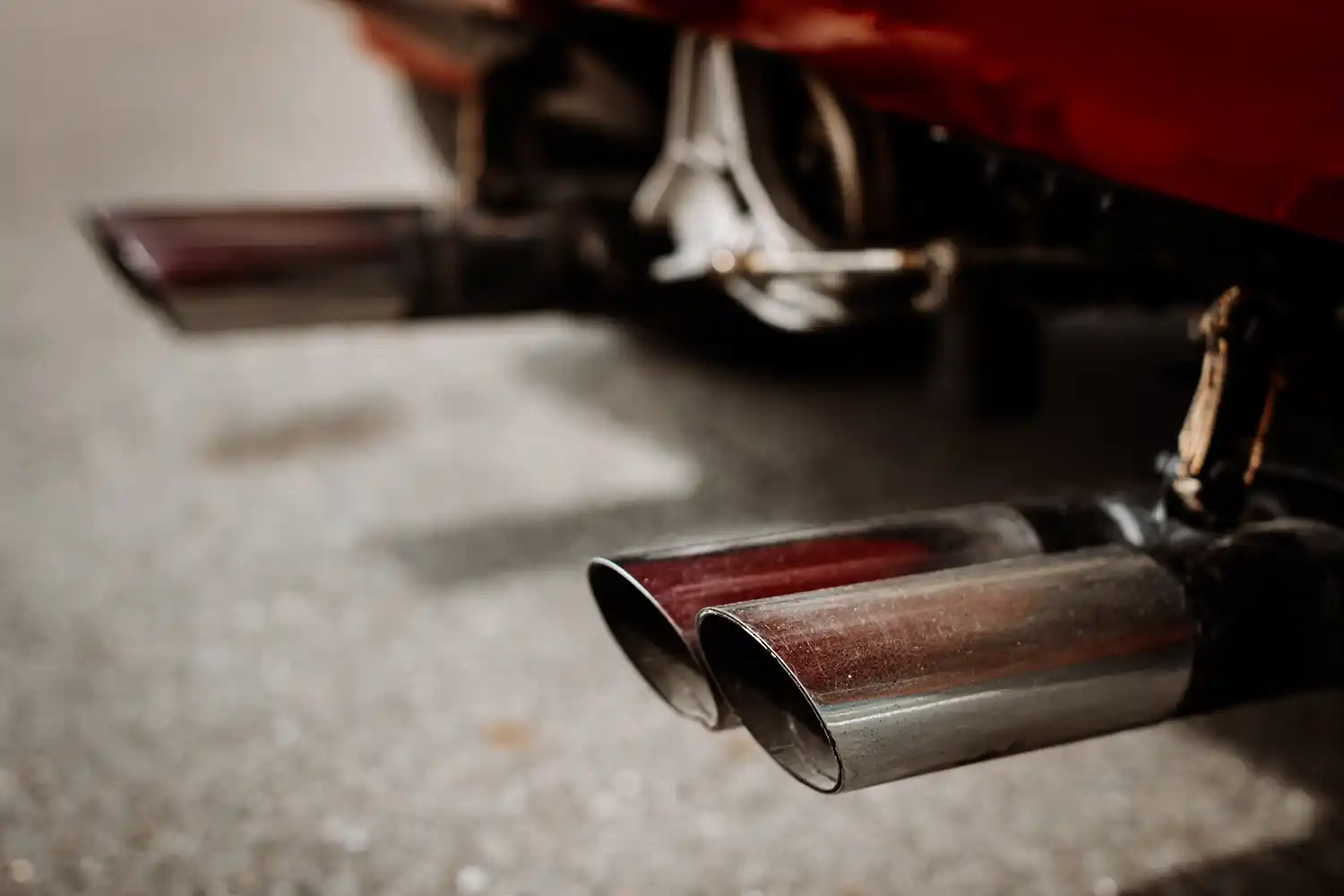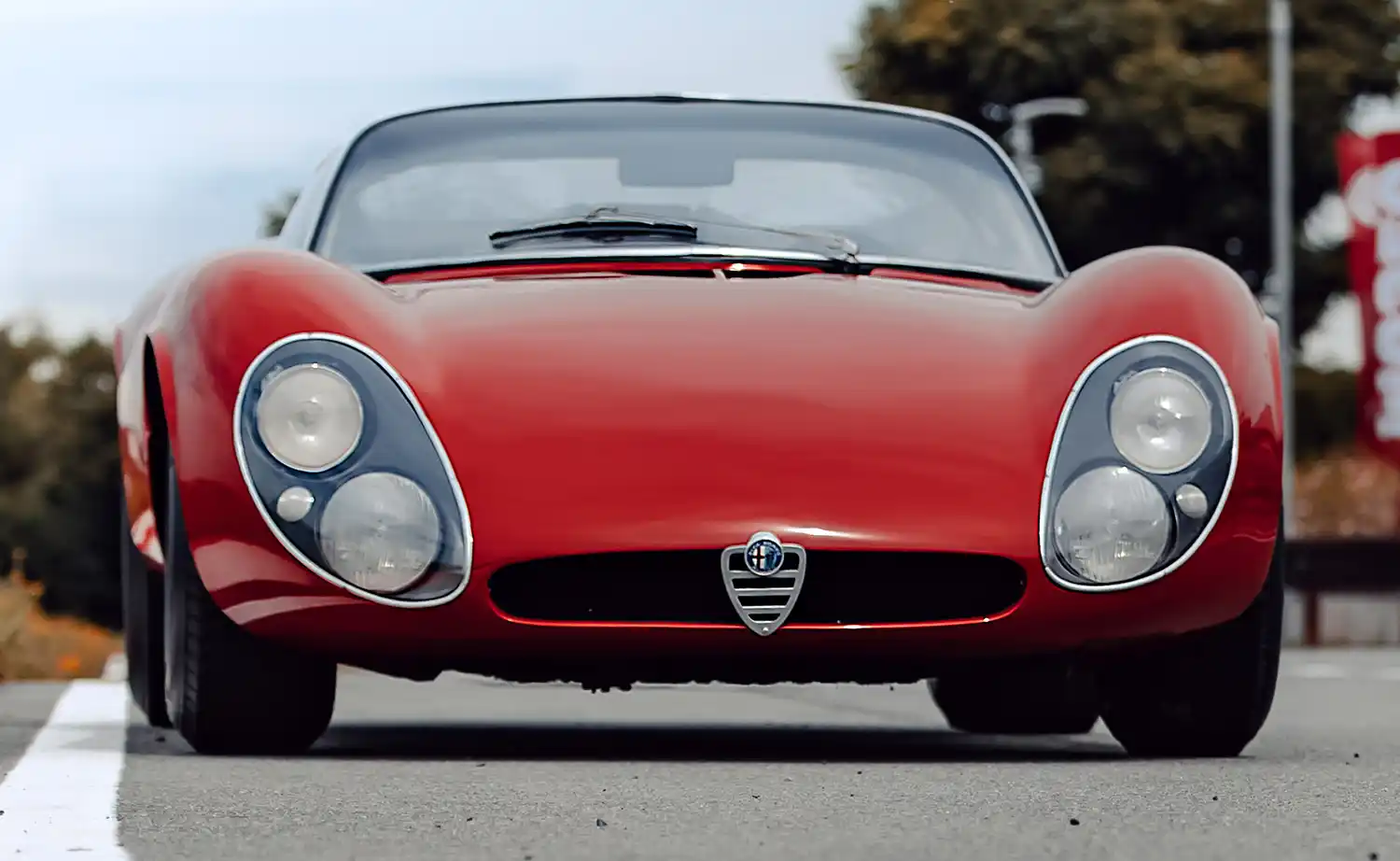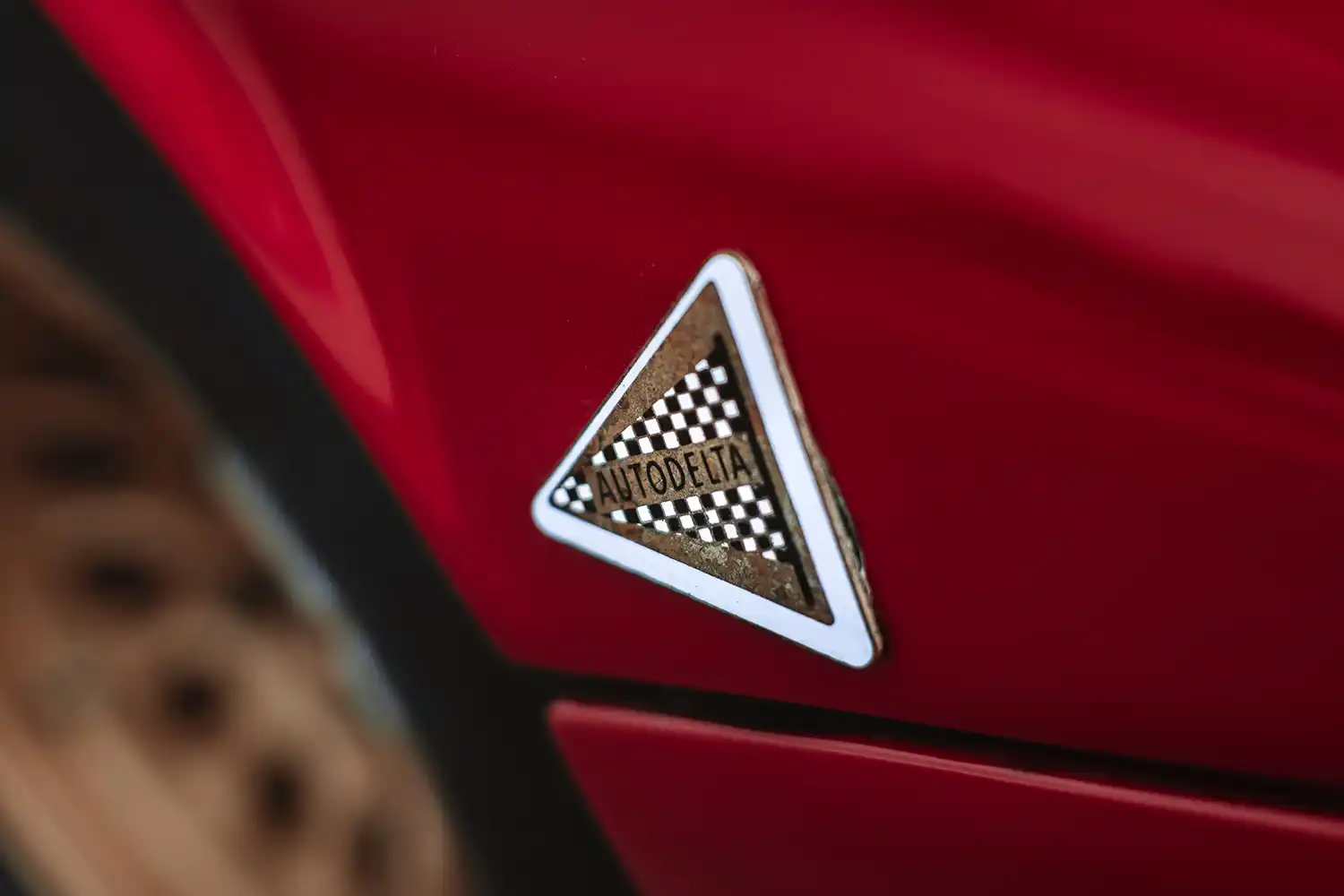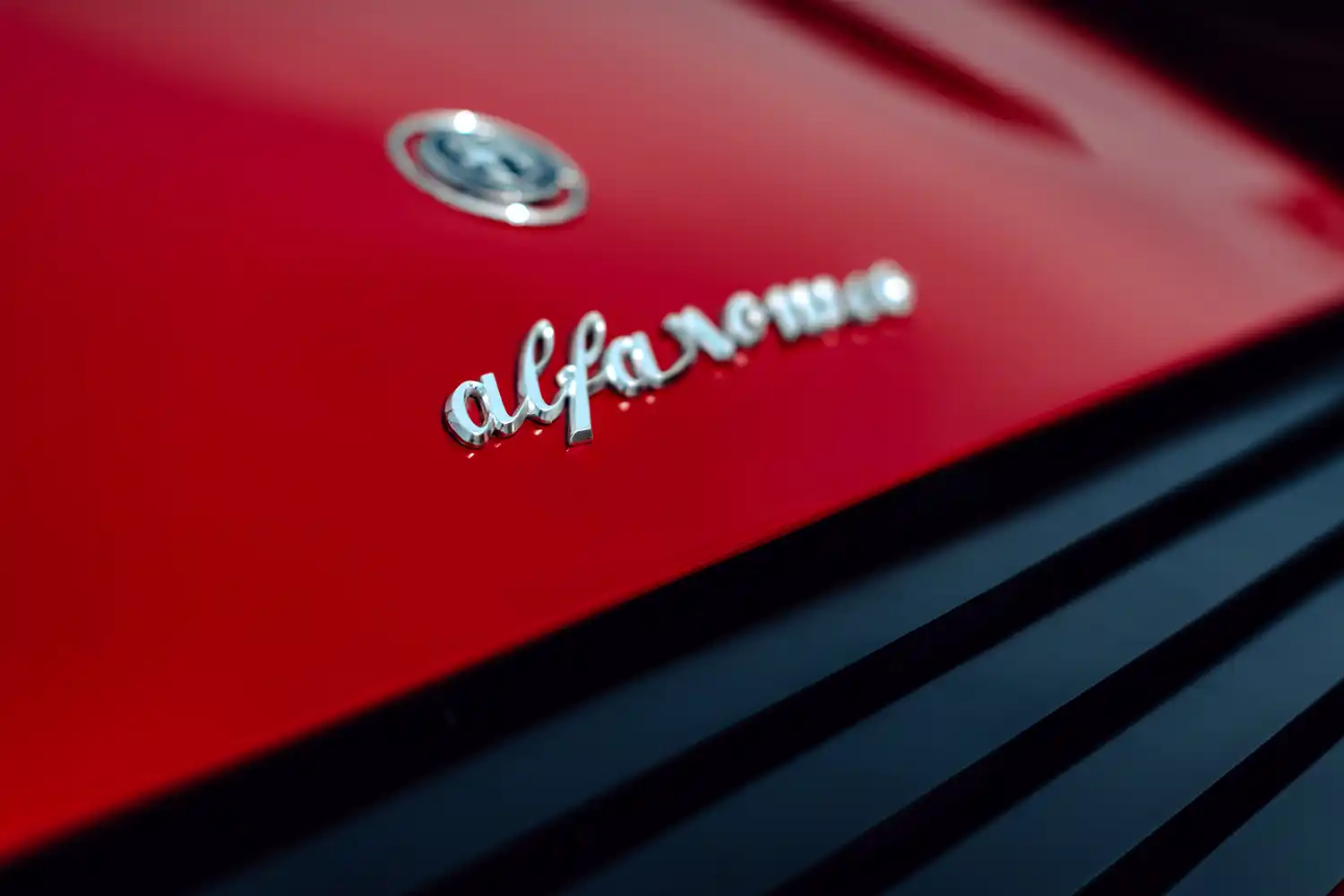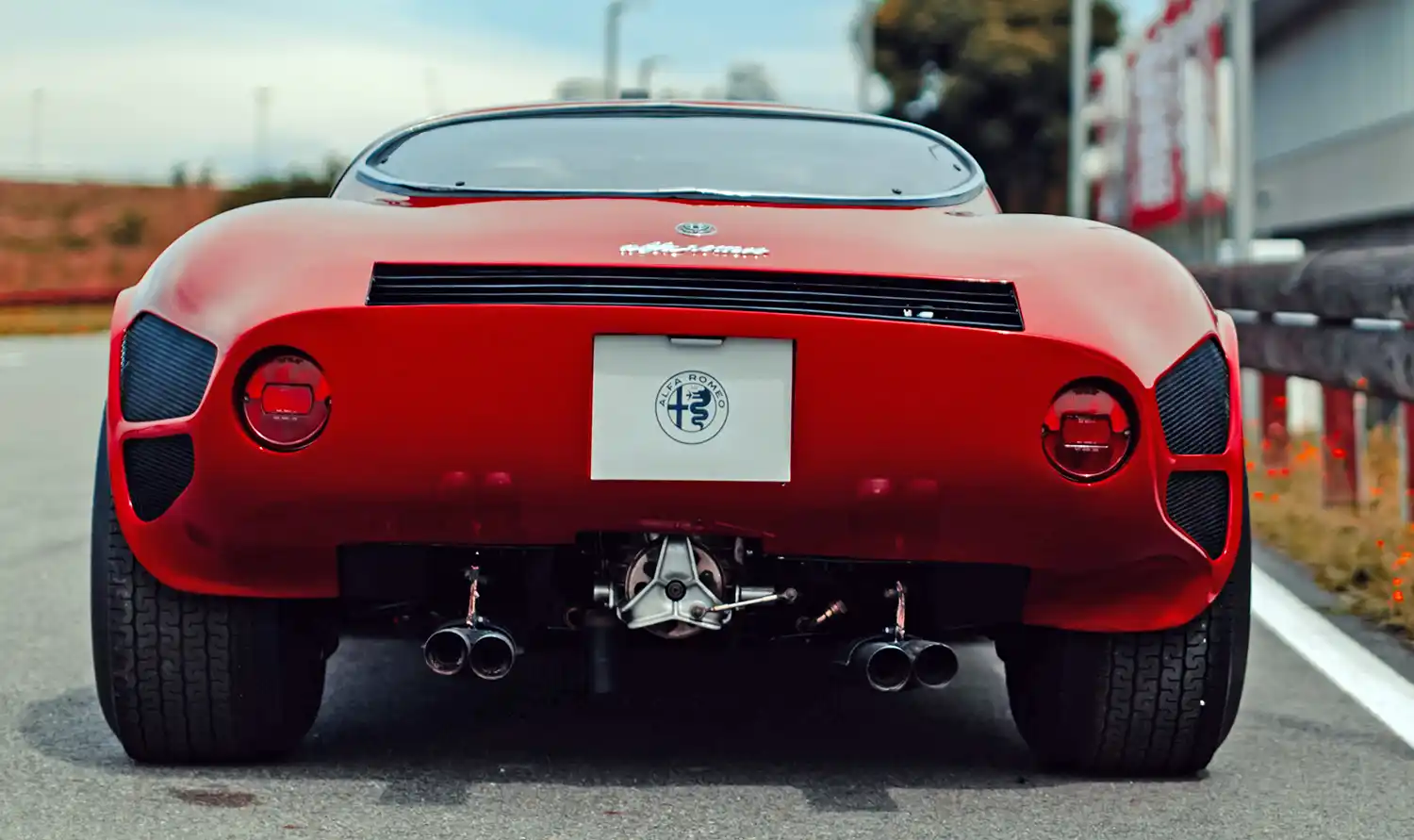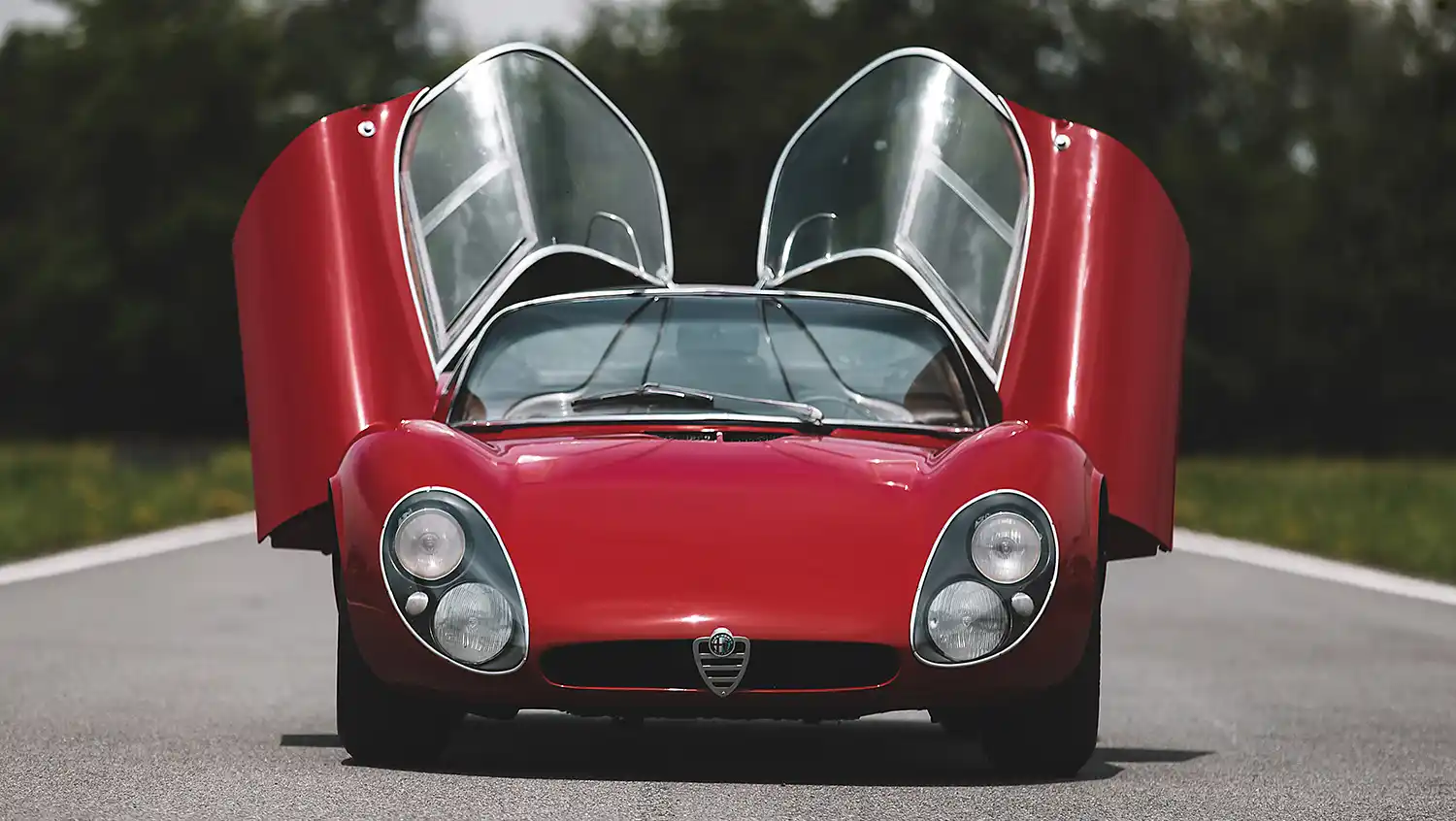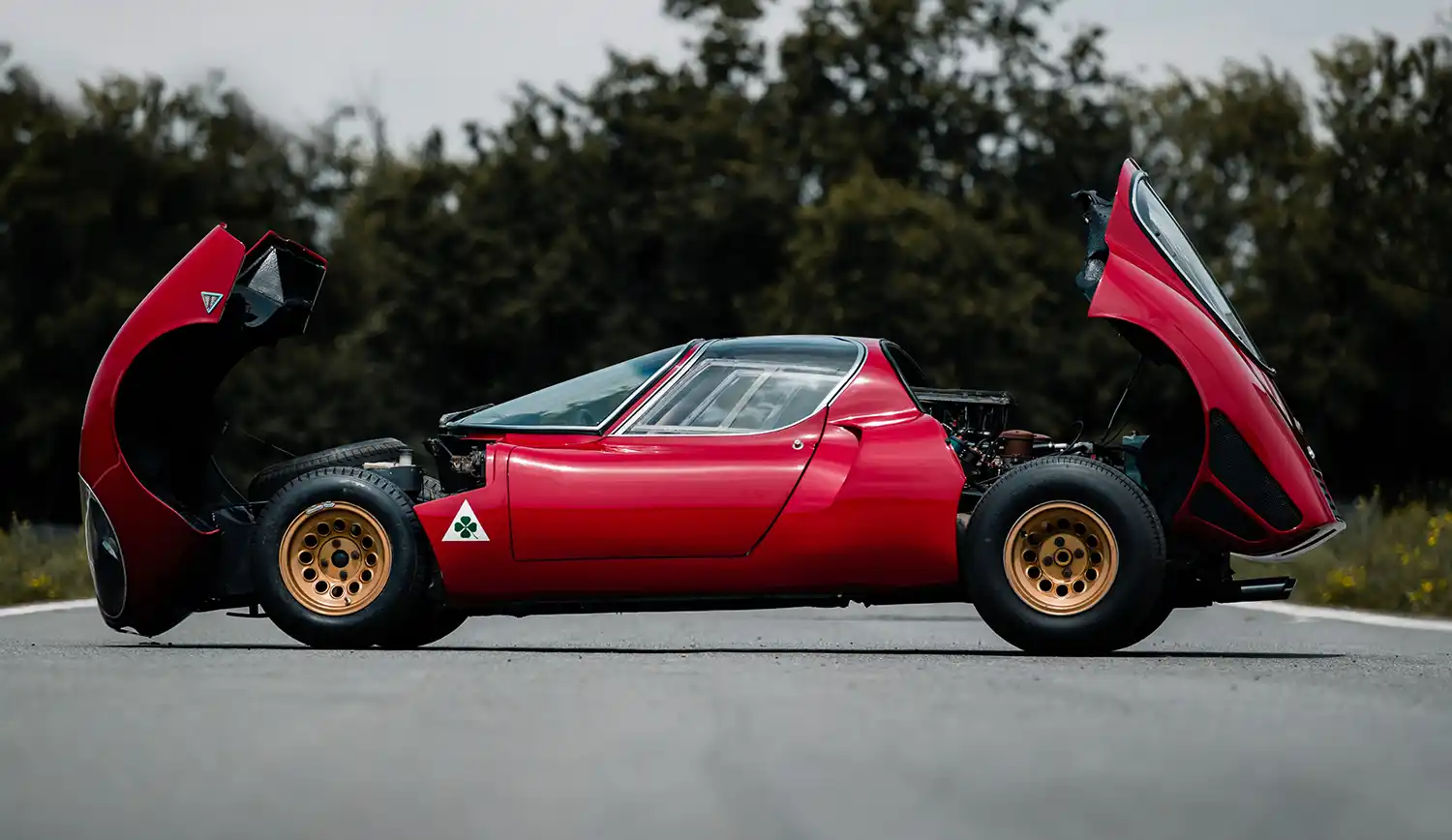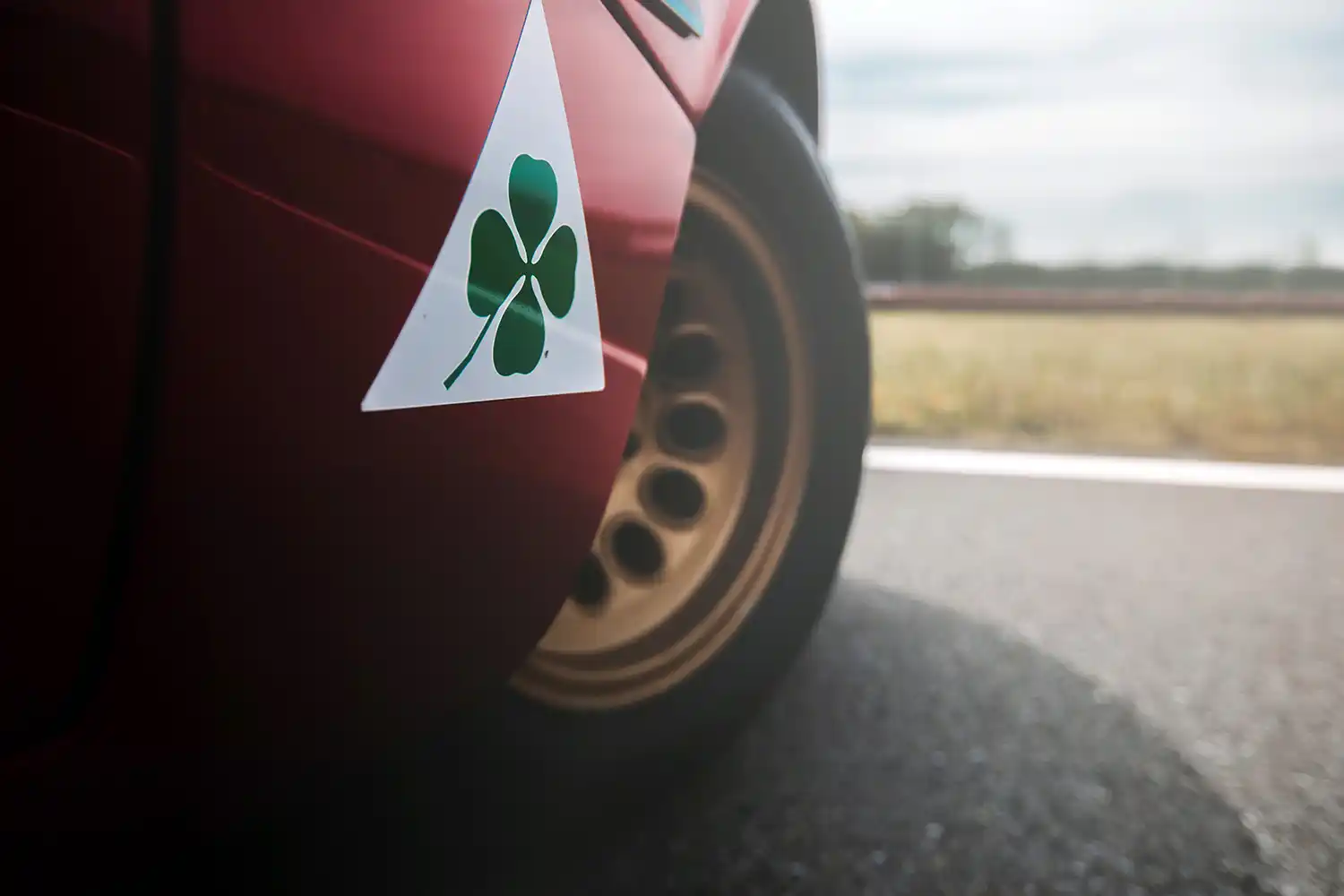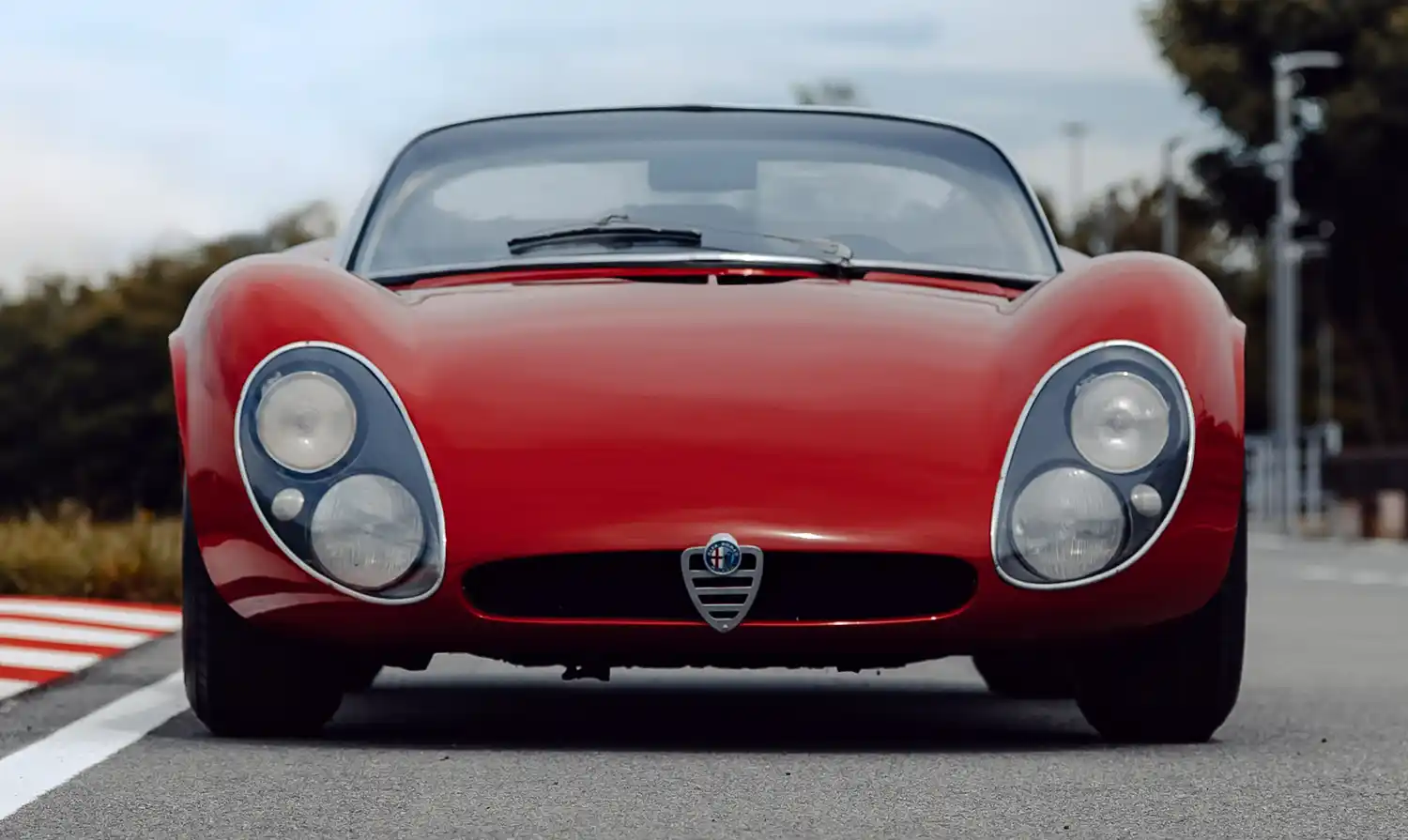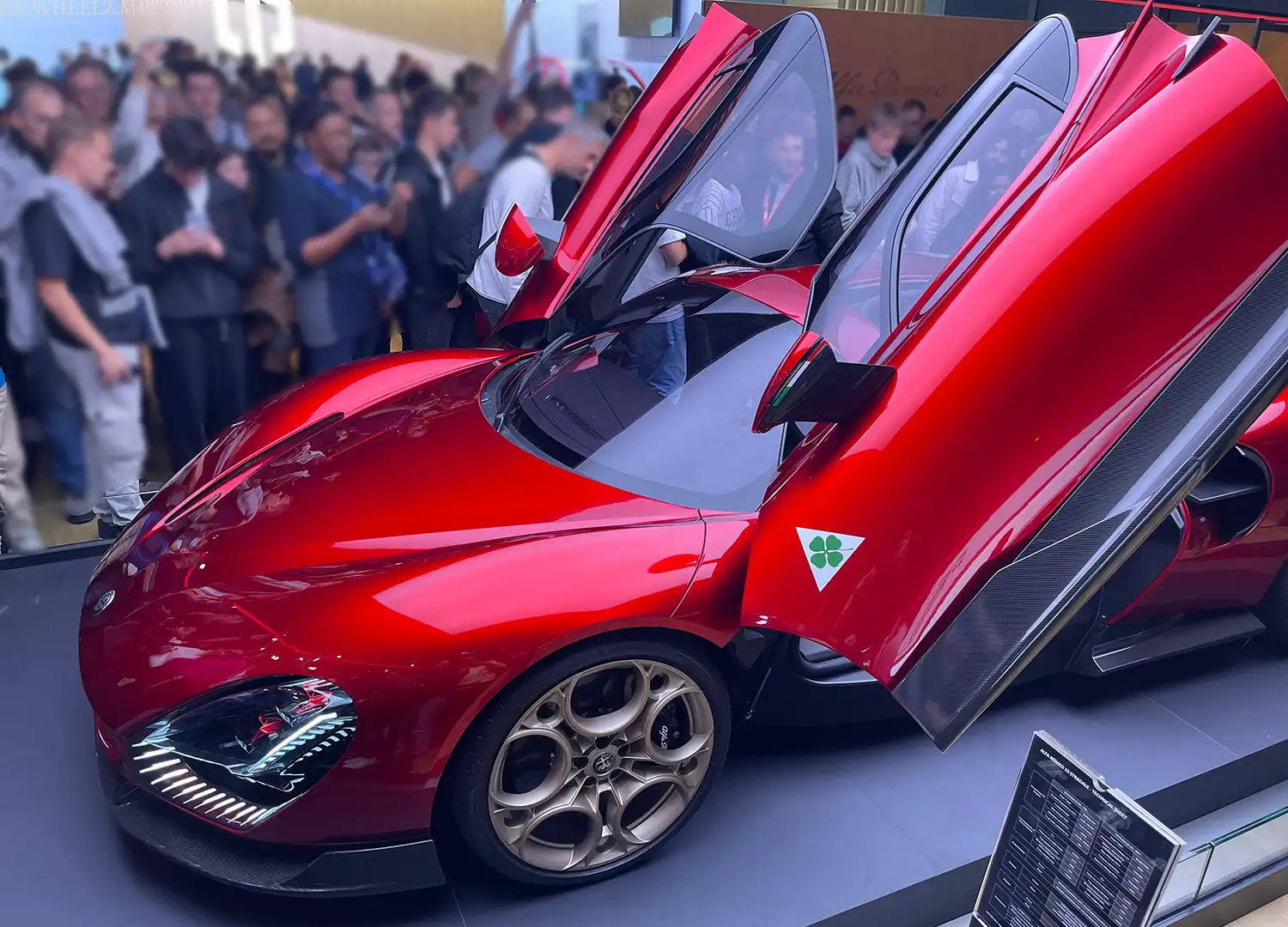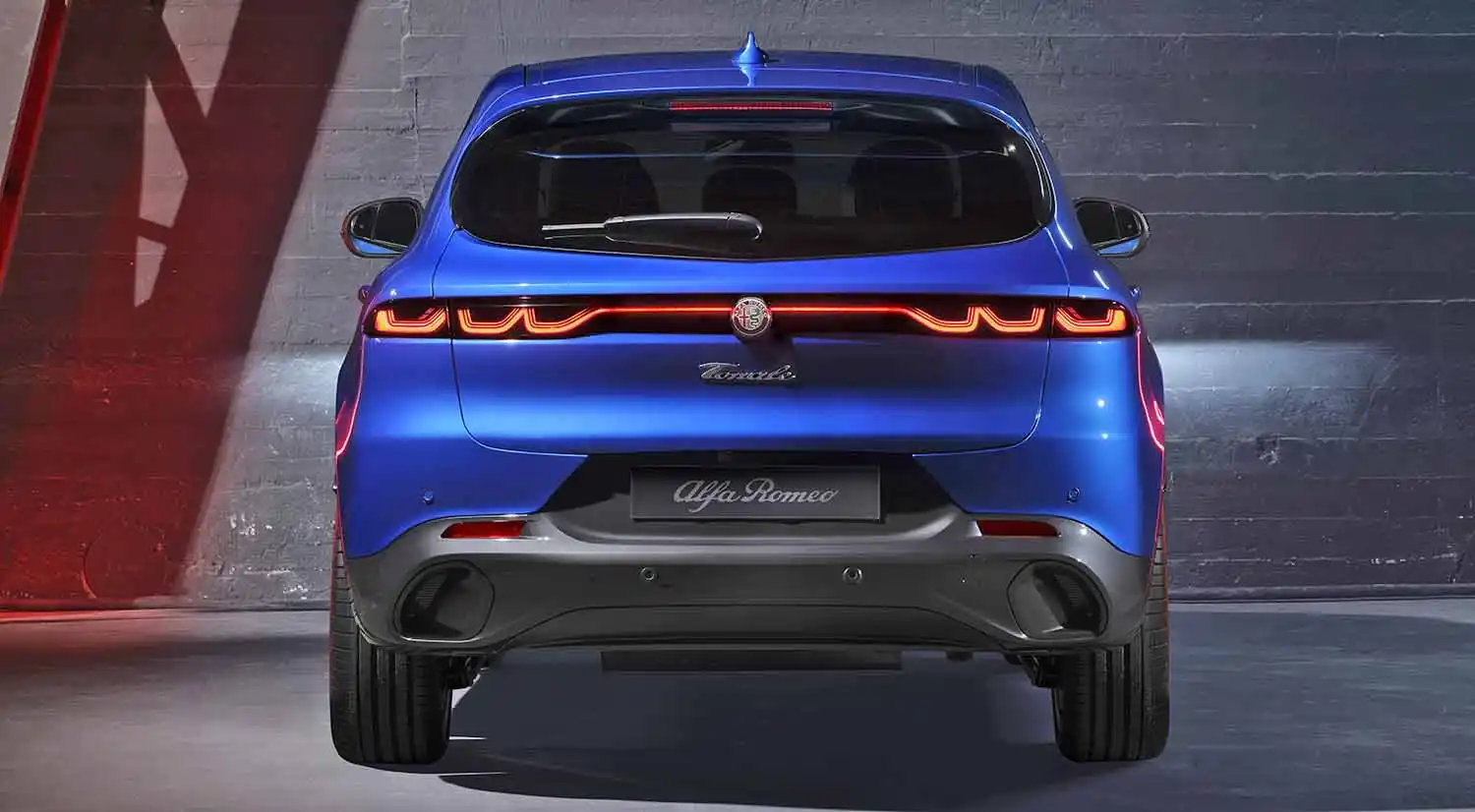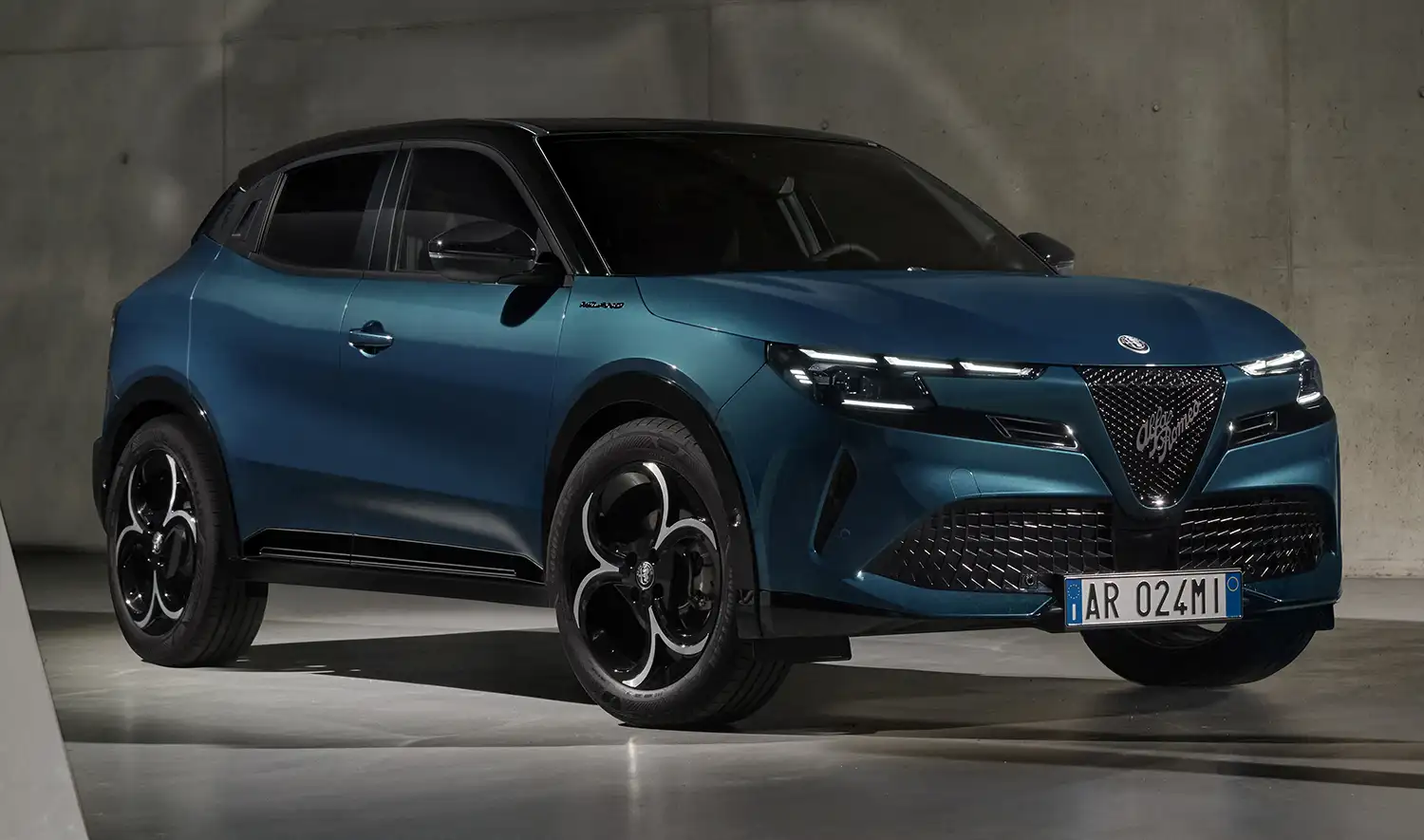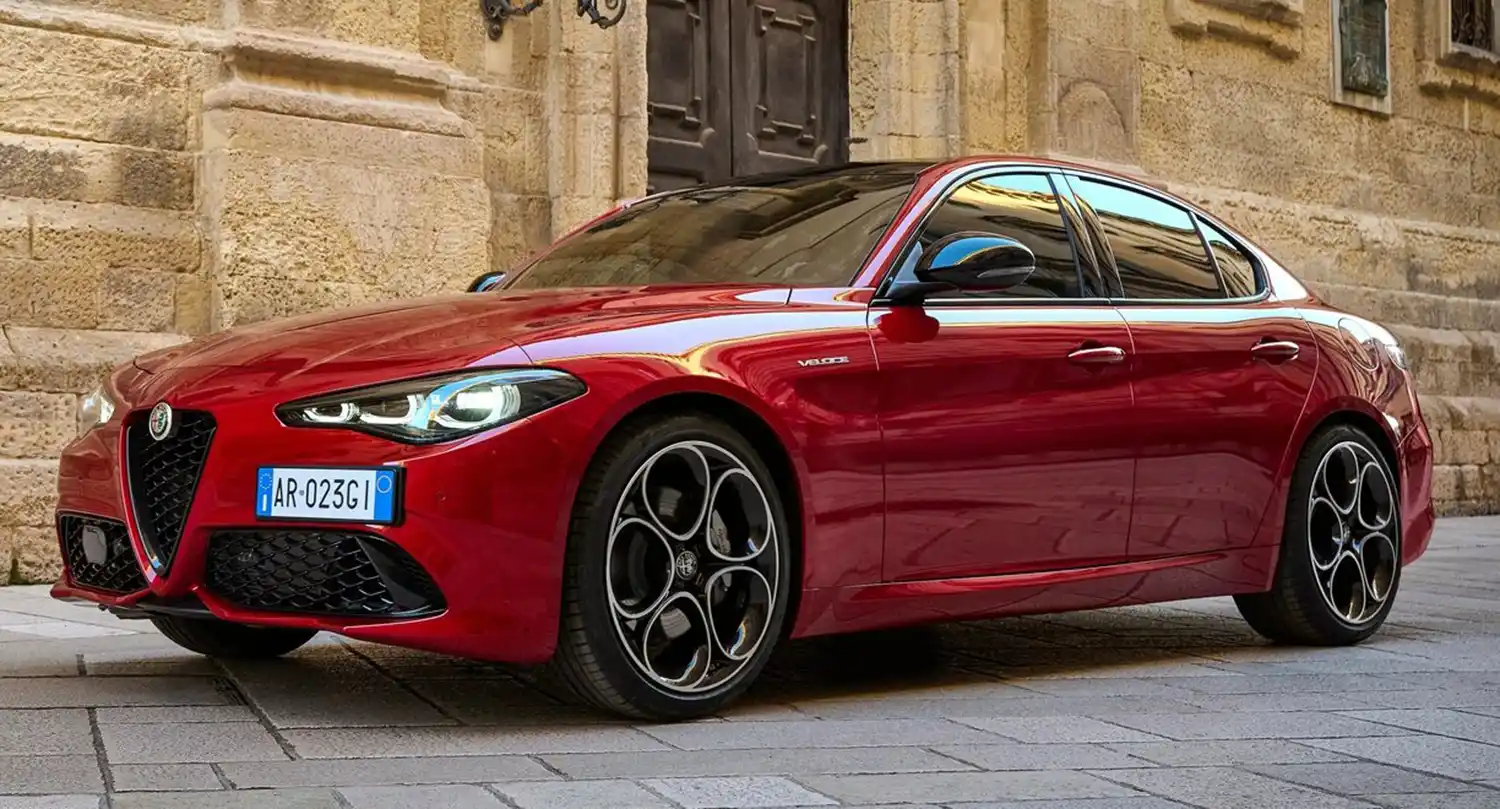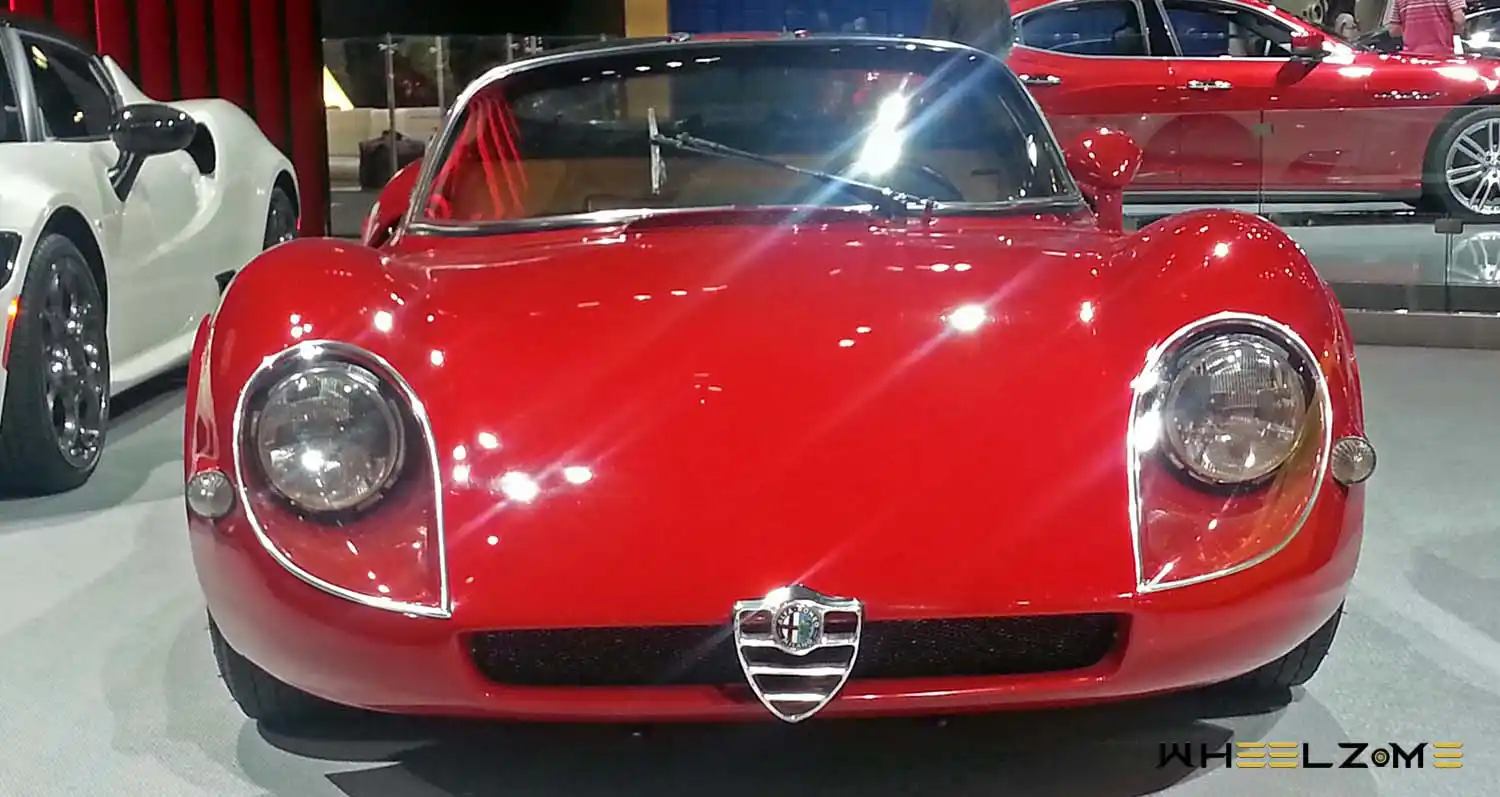
The 1967 Alfa Romeo 33 Stradale is one of the most fascinating cars ever produced by the Italian brand: it is the combination of beauty and performance, embodying the key Alfa Romeo concept of “necessary beauty”, i.e., the perfect balance between sophisticated mechanics and the style enveloping them. We can briefly retrace its history by paying tribute to the bold visionaries who had the determination to transform an ambitious dream into a “fuoriserie” (‘custom-built’) car that continues to serve as a source of inspiration for the future of the Alfa Romeo brand.
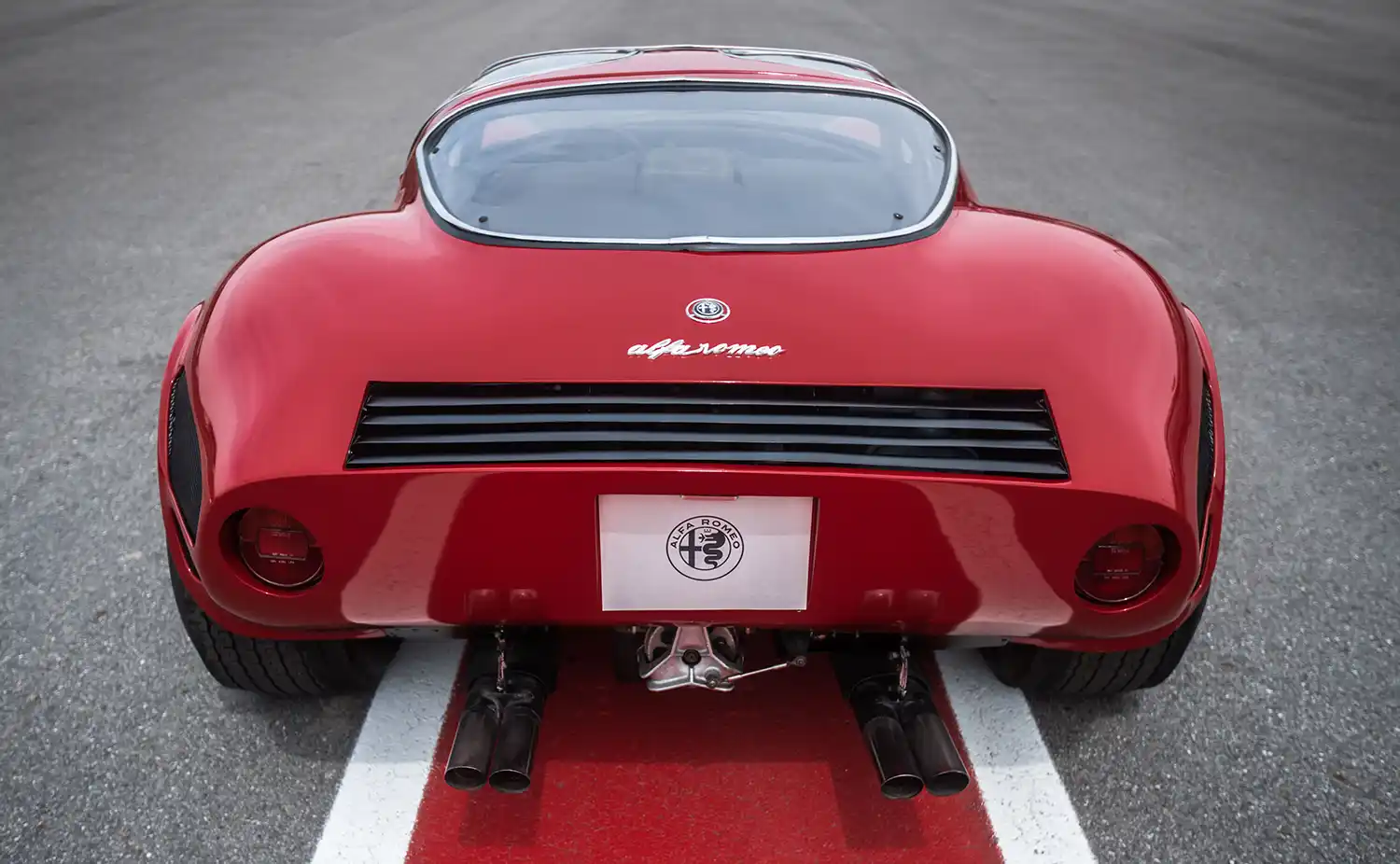
It was the Swinging Sixties, a time of economic rebirth and socio-cultural redemption. The car was an object of desire, a symbol of elegance, speed and exclusivity. At that time, Alfa Romeo was led by Giuseppe Eugenio Luraghi, a multifaceted and cultured manager, who wanted to bring Alfa Romeo back on to the international motorsport stage, after the glories of the first half of the century. Just think of the victories of the first World Championship for Grand Prix cars in 1925, the 11 editions of the Mille Miglia, the four consecutive editions of the 24 Hours of Le Mans and, at the of its sporting glory, the first two F1 World Championships featuring the legendary drivers Farina and Fangio.
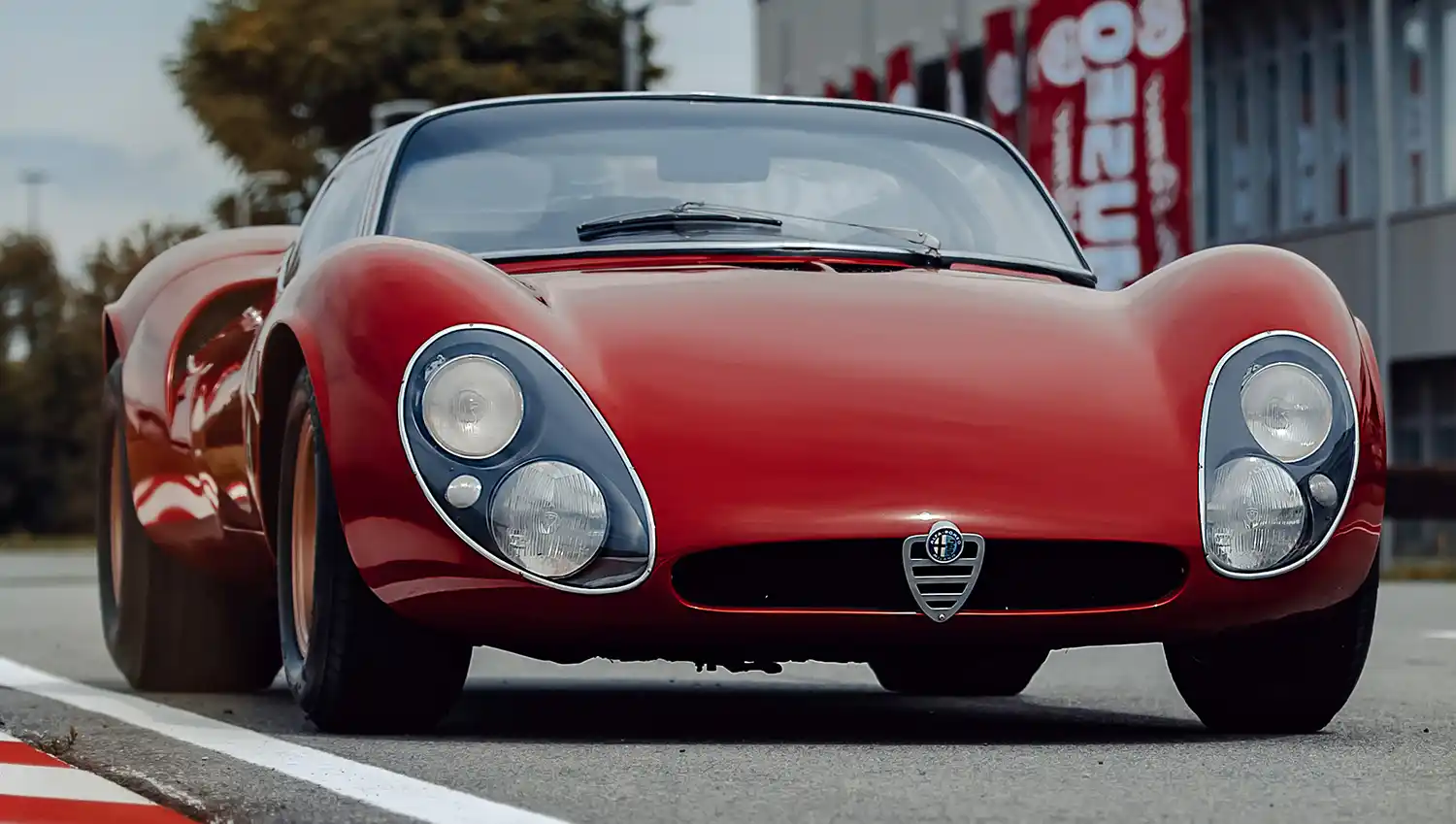
In 1964, the brand’s President Luraghi felt that it was high time for an official return to competition. To reconstitute a racing department, he acquired Autodelta, an Udine operation that was already a privileged partner in the production of the TZ. With Autodelta, Carlo Chiti – who had already worked at Portello from 1952 to 1957, who then became manager of the official team – also returned to Alfa Romeo. In the same year, the 33 project began. Luraghi asked his team for a car that could compete in the “classes of the moment” for public success and media attention: the World Sportscar Championship.
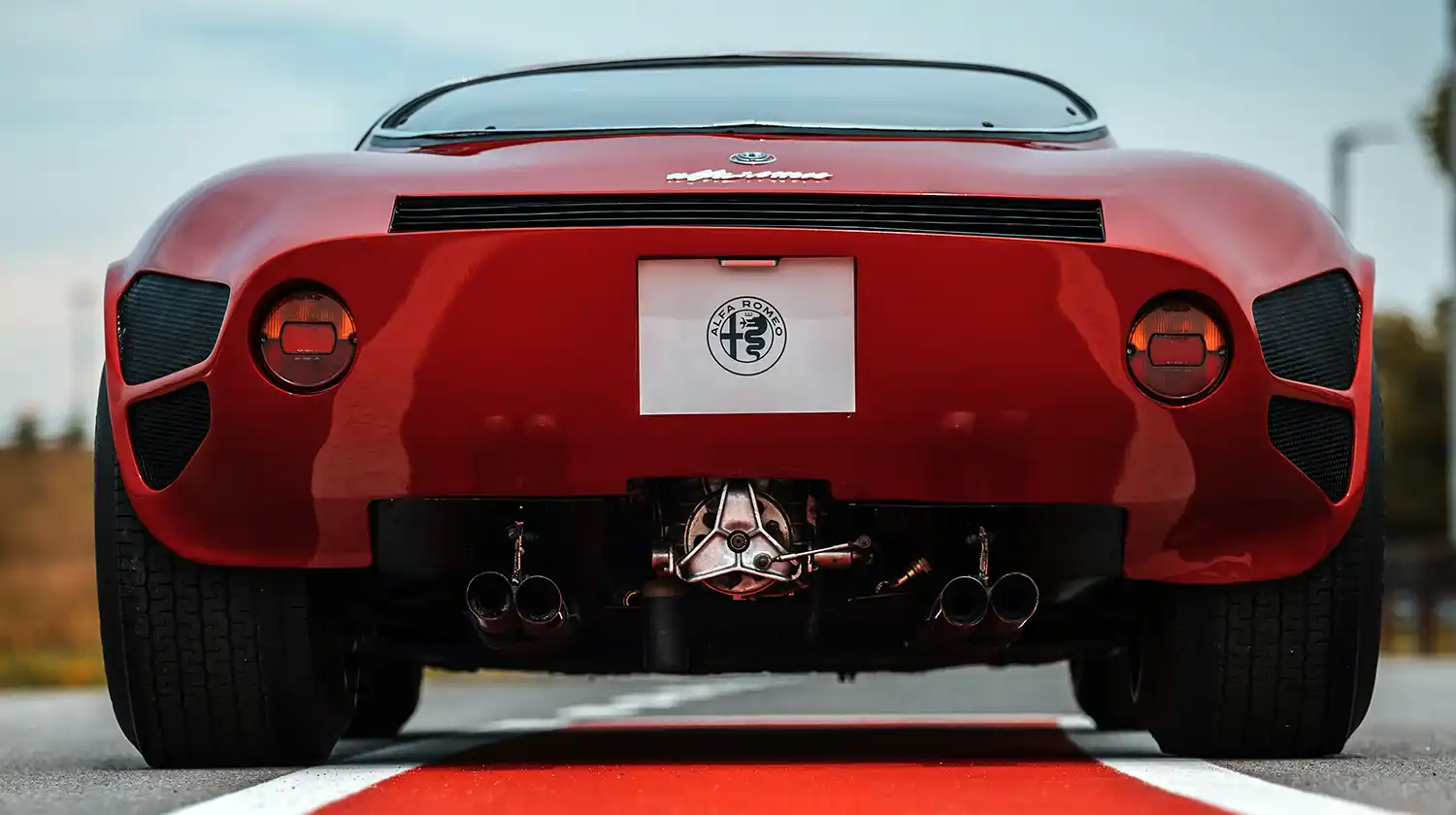
In the mid-1960s, Autodelta relocated to Settimo Milanese – closer to the Alfa Romeo plant, but most of all to the Balocco test track. The first Tipo 33 frame designed by Alfa Romeo, drawing inspiration from aeronautics, came to the Autodelta workshops in 1965. It had an asymmetrical “H” tubular structure, made of aluminum alloy, with internal integral fuel tanks. In the front panel, a magnesium structure provided optimum support for the front suspension, radiators, steering, and pedals. The engine and gear unit was longitudinally mounted in a central rear position. The bodywork was made of fiberglass, to limit the total mass of the car to 600 kg – the minimum regulatory weight. Once again, lightness was Alfa Romeo’s secret weapon.
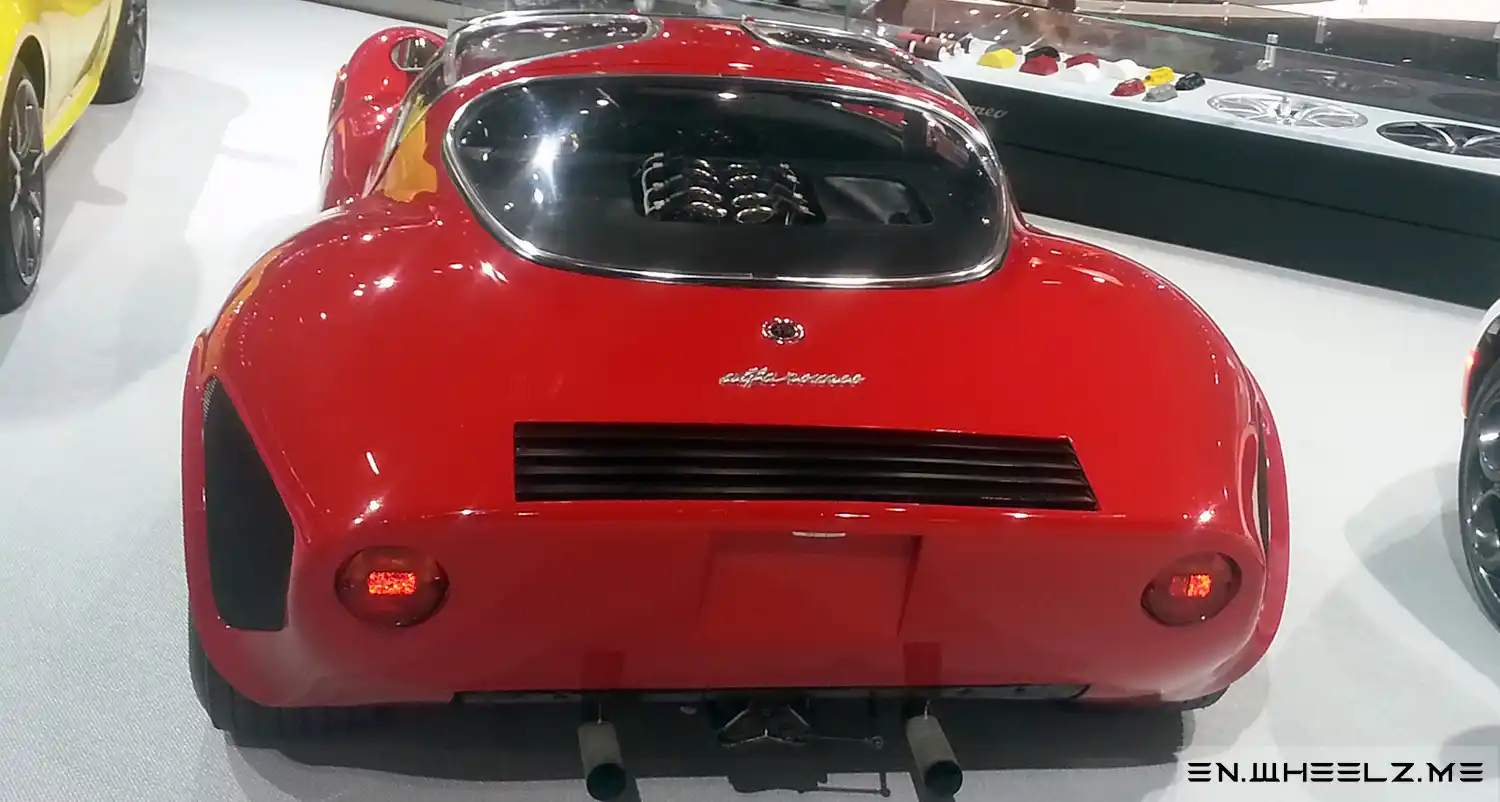
Short development timescales were unrealistic for such an ambitious (and innovative) project. Almost two years would pass before the 33 was ready to race. For the first tests, the car adopted the TZ2’s 1,570-cc 4-cylinder; in the meantime, a completely new engine was developed, with an 8-cylinder “V” configuration, two-liter capacity and output of 260 hp.
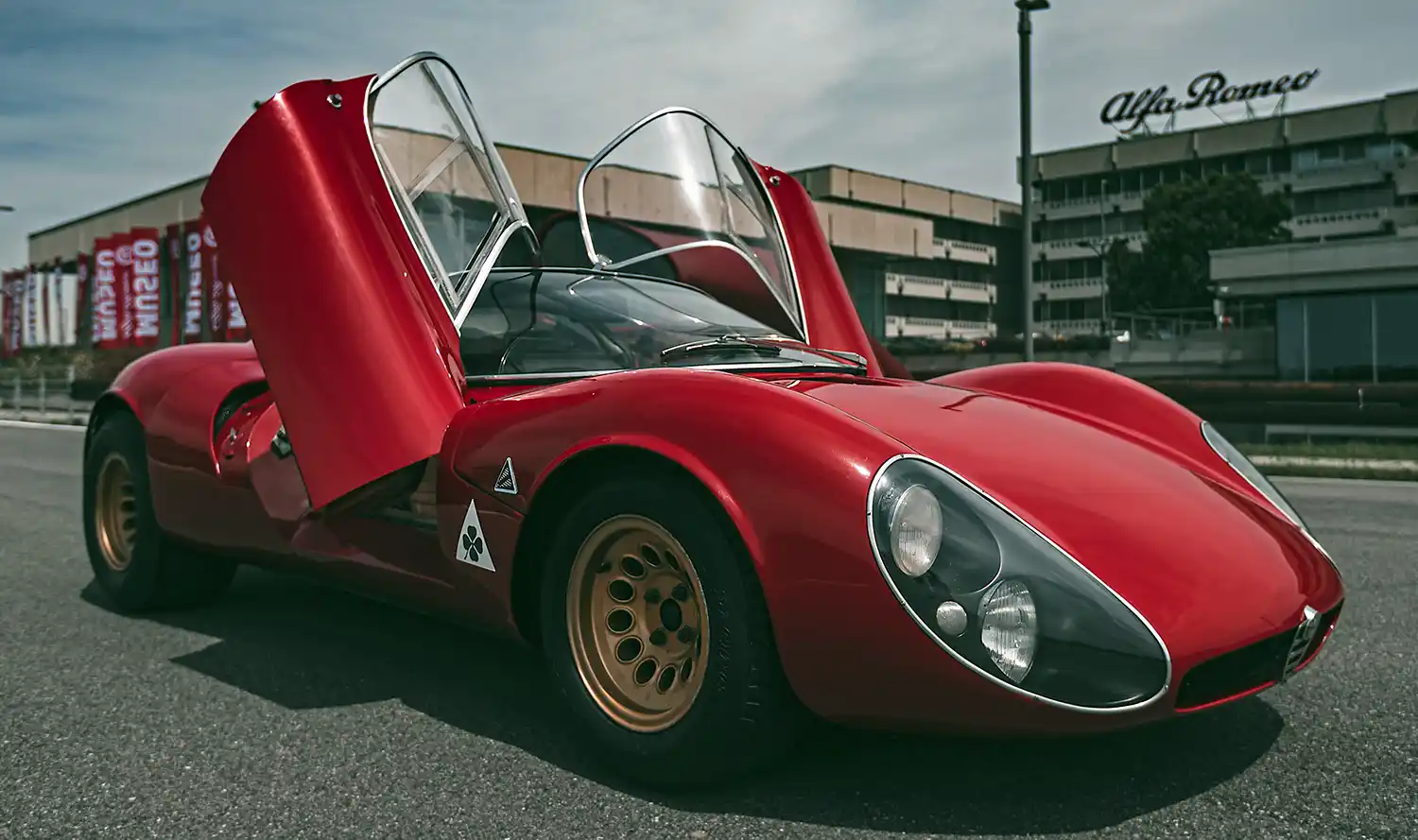
The first 33 to race was immediately nicknamed “Periscopica”, for the air intake that pops out above the roll bar. The time trial at Fléron, near Liège, was chosen for its debut. The driver was the chief tester at Autodelta, Teodoro Zeccoli. After years of meticulous preparation, the 33 entered the world of competitive motorsport on March 12th, 1967. And it scored an immediate victory, in the first in a long series of wins on the most prestigious circuits. This string of victories, including in the ’75 and ’77 World Championship for Makes, made the 33 a world leader.
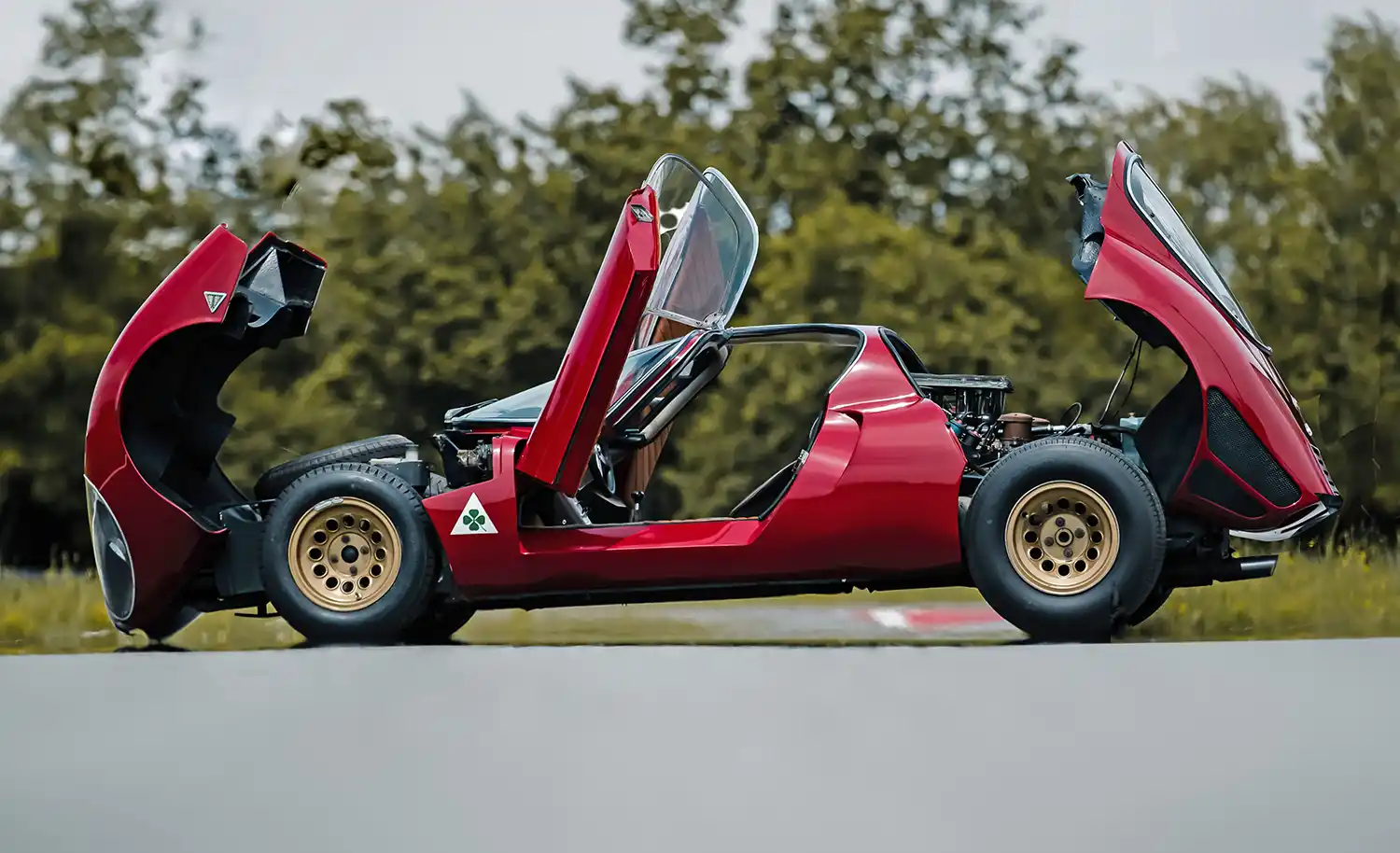
On the wave of enthusiasm for its return to racing, in 1967 Alfa Romeo decided to produce the 33 in a very limited edition for private individuals, as a “fuoriserie” (‘custom-built’) car that combined the performance of the Tipo 33 racing car with comfort and drivability suitable for everyday use. The design was entrusted to Franco Scaglione. Born in Florence into an ancient aristocratic family, Scaglione studied aeronautical engineering until he was conscripted into the army. He then set off for the Libyan front and was taken prisoner in Tobruk. He returned to Italy in late 1946. Determined not to resume his studies, he chose to become a car designer: first with Pinin Farina, then with Bertone, and eventually working freelance. Scaglione put all his technical expertise and creative daring into the design of the 33 Stradale, resulting in a masterpiece where innovation in style blends with the quest for aerodynamics and functionality.
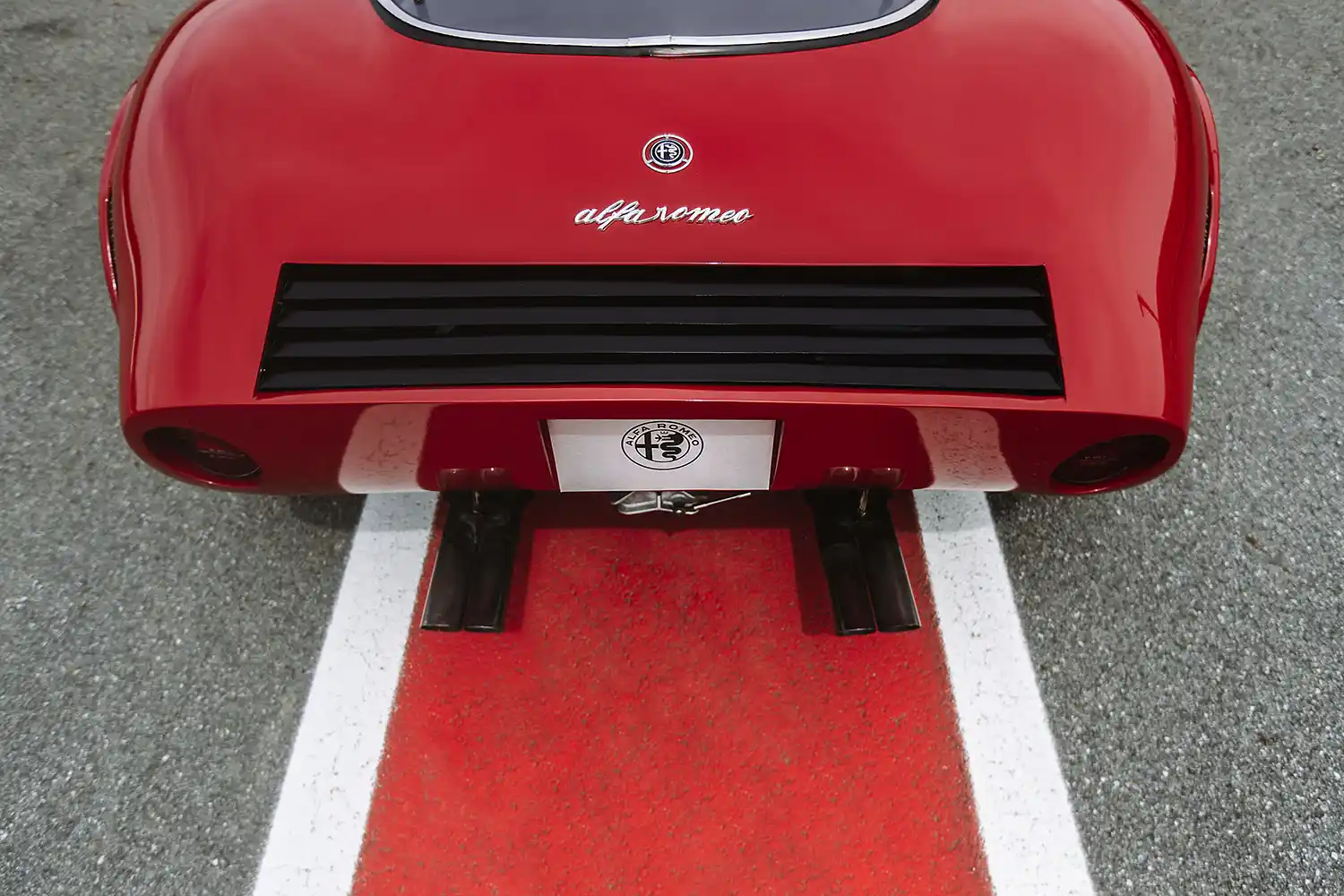
The result was the Alfa Romeo 33 Stradale, a coupé just 99 cm high with vertically opening doors, one of the very few road cars based on the racing model, from which it inherited excellent technical solutions that can still overshadow those of sophisticated modern cars 56 years later. Its design, the quintessence of beauty in a car, is almost impossible to describe: its expressions were the balance of its forms, the purity of its lines, the elegance of its every detail. The cofango of the 33 Stradale opens fully to improve access to the mechanical components. For the first time on a “street-legal” car, its “elytra” doors make it easier to get into a vehicle that rises less than one meter off the ground. The other differences from the track version are the extension of the wheelbase by 10 centimeters, to extend the space in the passenger compartment a little, and a steel frame rather than an aluminum one.
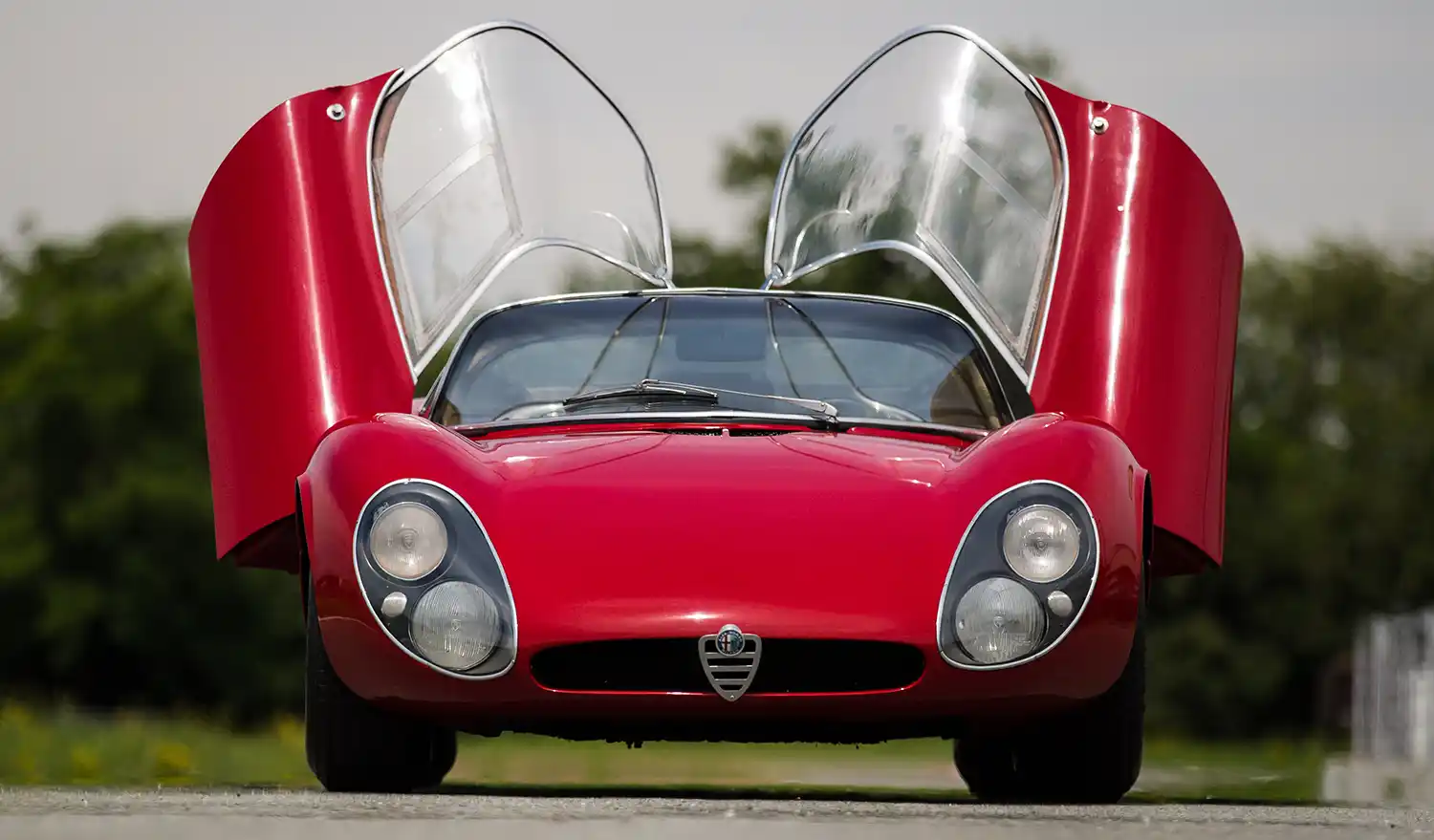
In addition to the design, the exciting part of an Alfa Romeo is its engine, and the 33 Stradale is no exception. Derived from the engine fitted to the racing version and made of aluminum and magnesium alloys, with indirect mechanical injection and a compression ratio of 10:1, the two-liter engine has 8 V-cylinders and delivers 230 hp at 8,800 rpm and a torque of 206 Nm. In such a lightweight car, these figures translated into true supercar performance for the time: the top speed exceeded 260 km/h and acceleration from 0 to 100 km/h was in just 5.5 seconds. It is therefore an authentic gem of Italian motoring, designed by the legendary engineer Giuseppe Busso and refined by Carlo Chiti’s team for application to the 33 project.
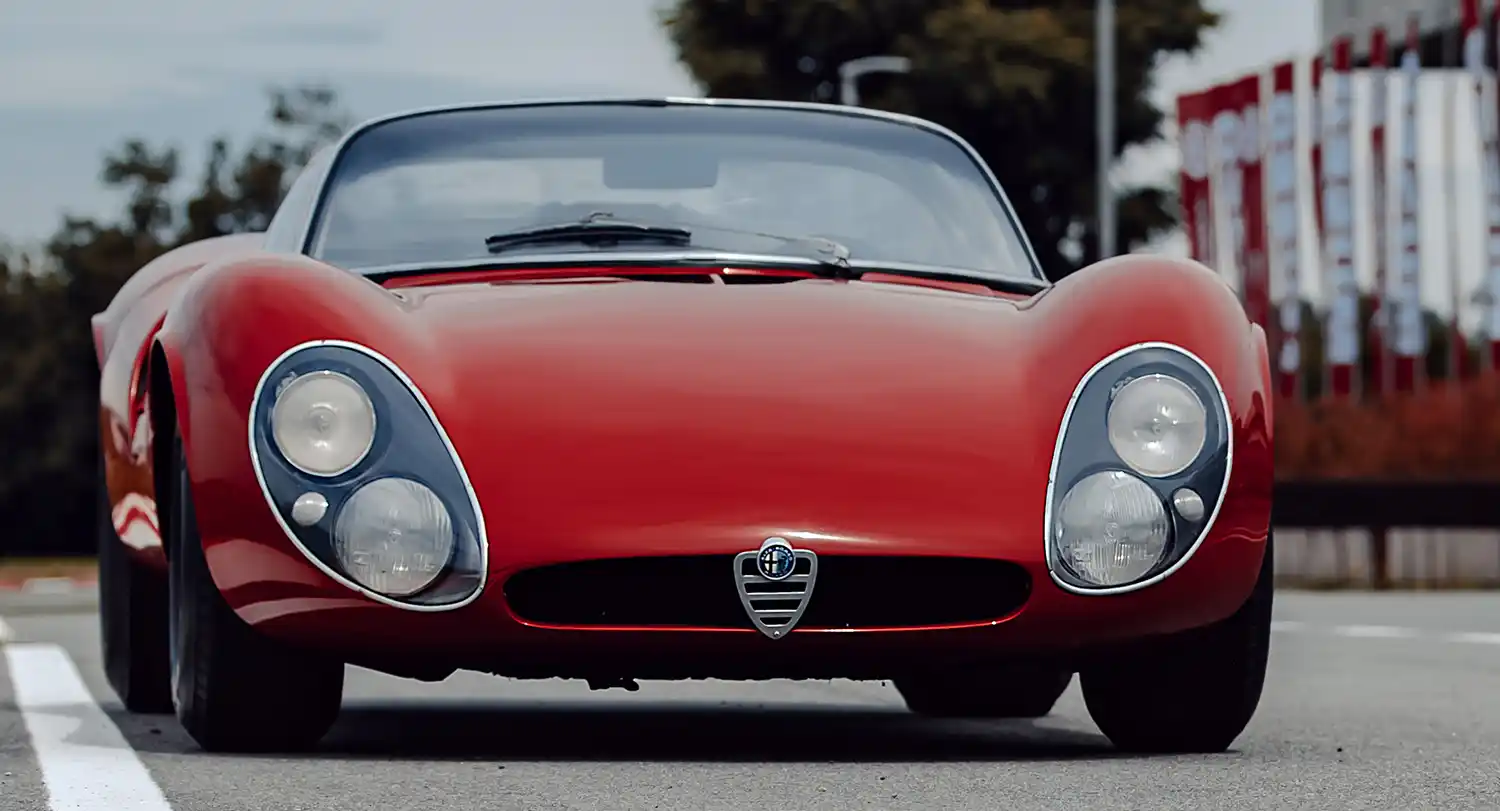
The 33 Stradale was officially launched at the 1967 Turin Motor Show, having been unveiled a few weeks earlier to an enthusiastic audience of experts at the Autodromo di Monza, shortly before the Italian Formula 1 GP. The choice of location was no coincidence, epitomizing as it did the link between the world of racing and road cars. A bond sealed by the presence of the Quadrifoglio, used for the first time by Ugo Sivocci in 1923 and adopted from the 1960s onwards as the official symbol on the Alfa Romeos with the greatest sporting performance.
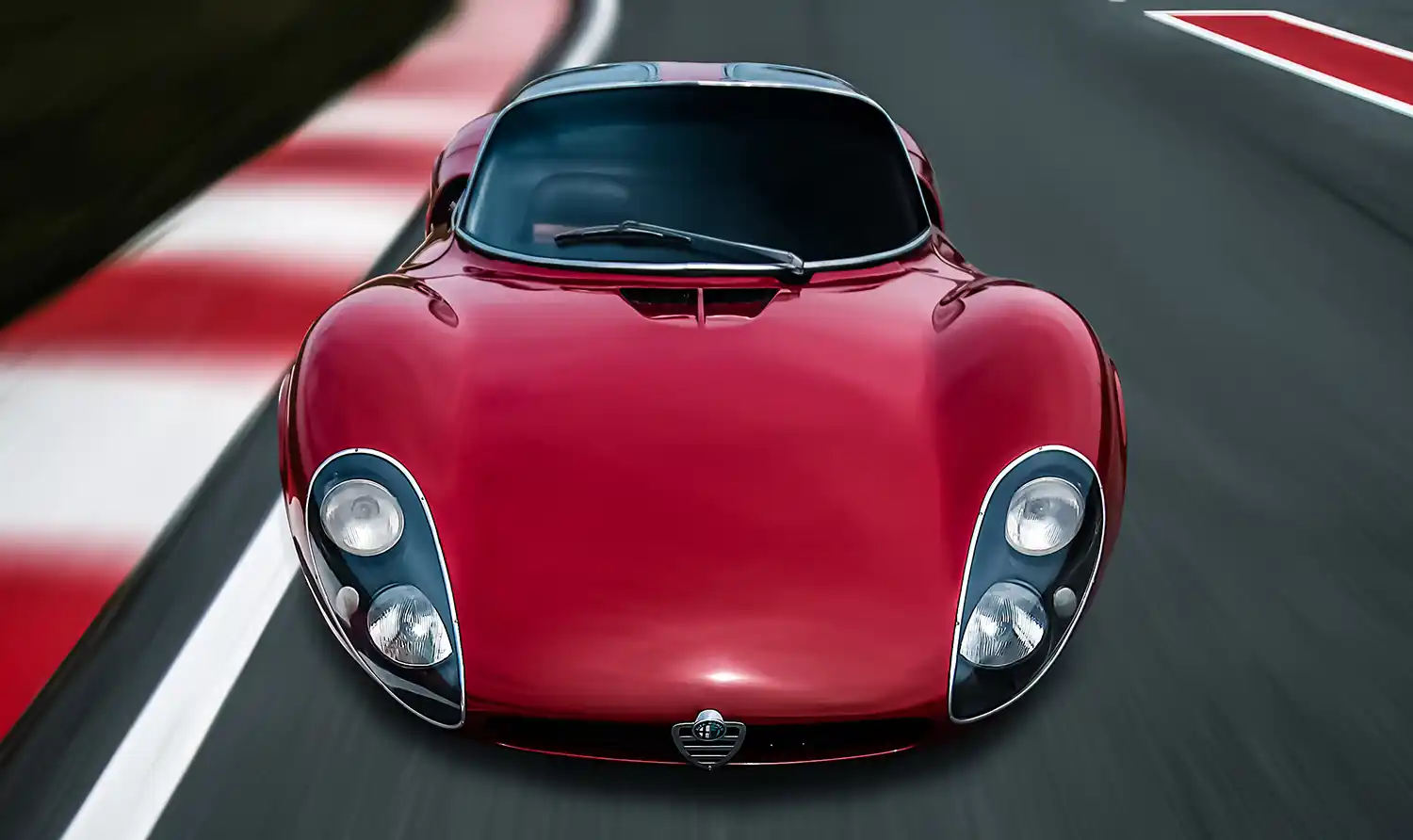
At launch, the Alfa Romeo 33 Stradale was the most beautiful and the most expensive sports car on the market, then selling for almost 10 million Italian lire, compared to 6 or 7 million for its most prestigious rivals. Between 1967 and 1969, only 18 specimens were produced, one of which is kept today at the Museum in Arese, making it an extremely rare piece much coveted by collectors from all over the world. Over the years, it has been celebrated at many events, exhibitions and concours d’elegance, consolidating its status as an icon of world motoring.
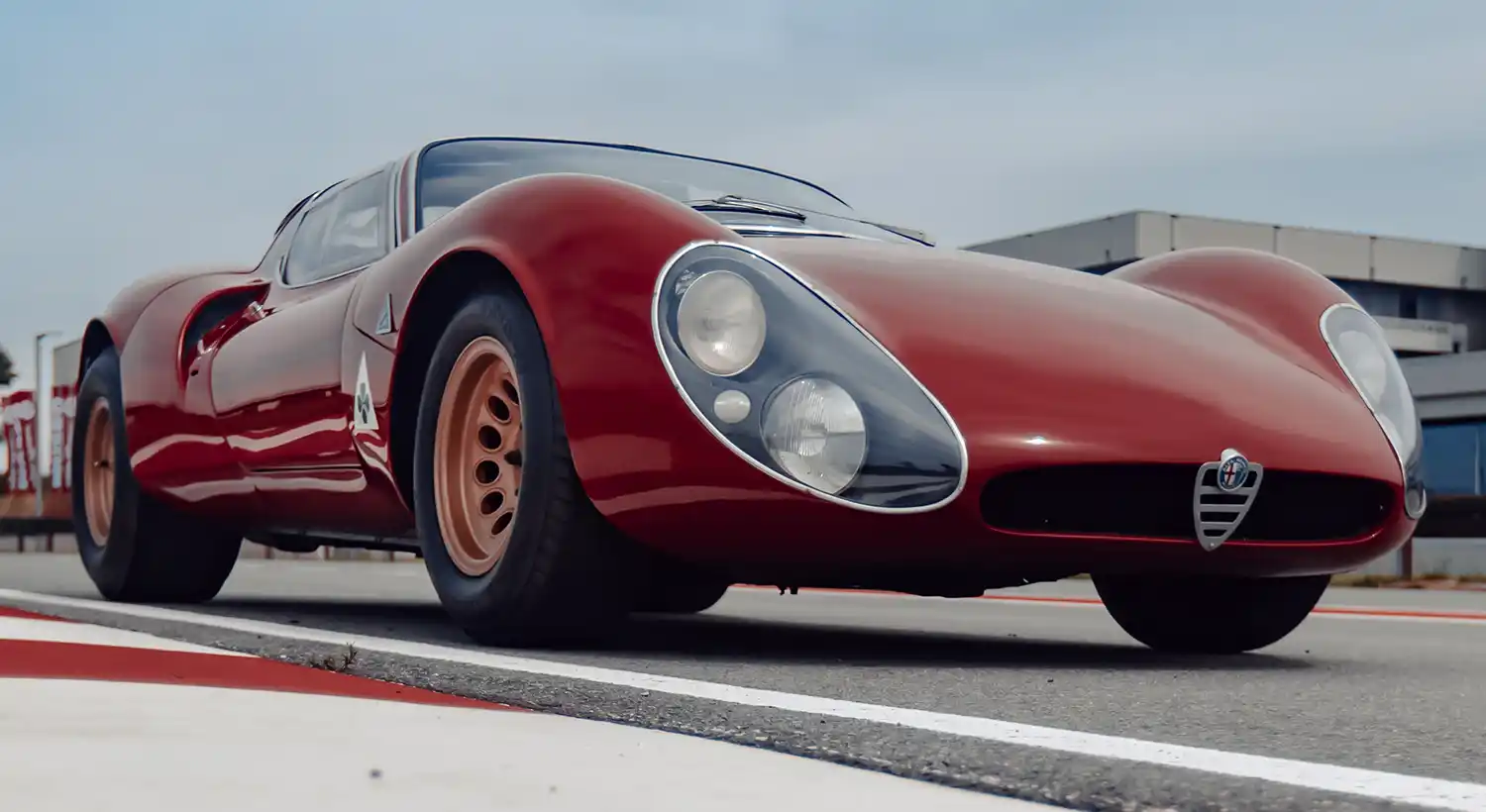
The immortal beauty of the 33 Stradale – courtesy of Franco Scaglione’s inspiration and the technology directly derived from the Tipo 33 – make it one of Alfa Romeo’s most representative icons. This appeal has been fostered over the years by the interpretations of the greatest designers of the time. Indeed, some of the 18 chassis of the 33 Stradale were used to make prototypes, which anticipated two decades of automotive design. The first dream car was the Alfa Romeo Carabo, designed by Marcello Gandini for Bertone, and exhibited at the 1968 Paris Motor Show. Three Pininfarina projects followed: the P33 Roadster GS in the same year, the 33/2 Coupé Speciale in 1969, and the Cuneo in 1971, which inherited the chassis from the P33 Roadster GS. The 1969 Iguana was the first Alfa Romeo designed by Giorgetto Giugiaro, when Italdesign was a newly founded company. A few years later, the “futuristic” 1976 Navajo was added, presented by Bertone. In short, the 33 Stradale is a legendary model that has marked not only the history of Alfa Romeo, but also that of Italian design.
